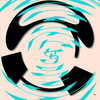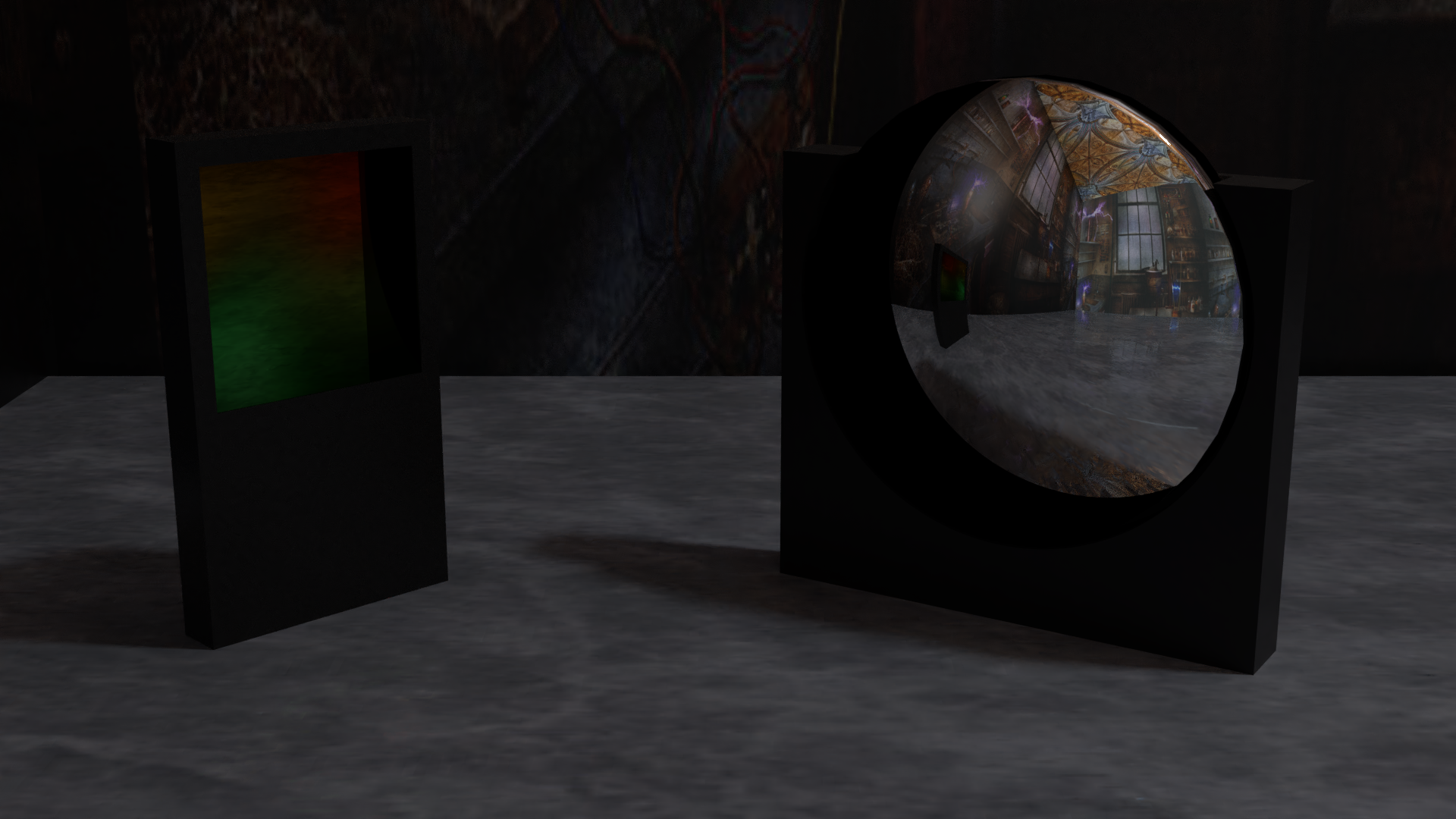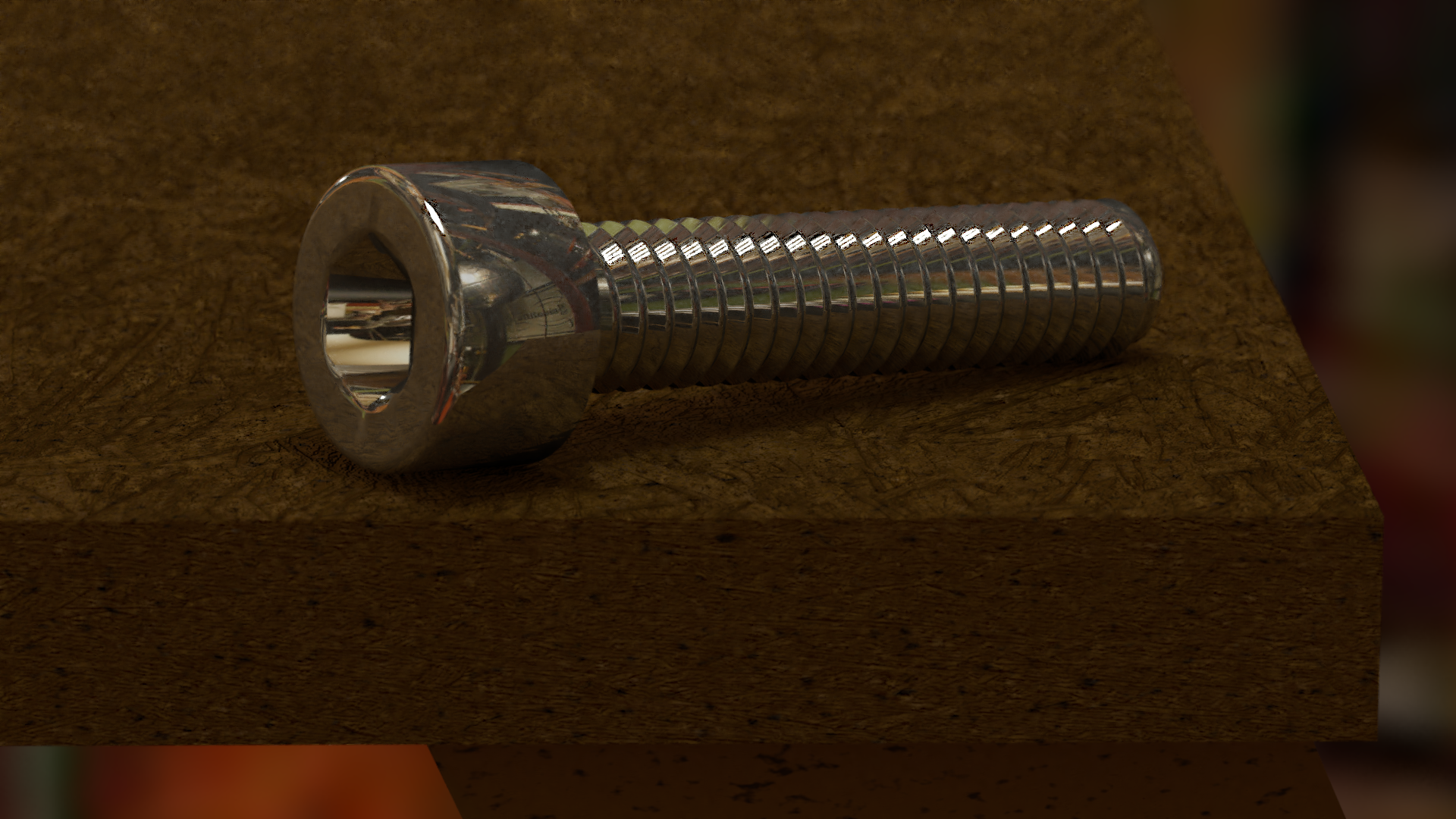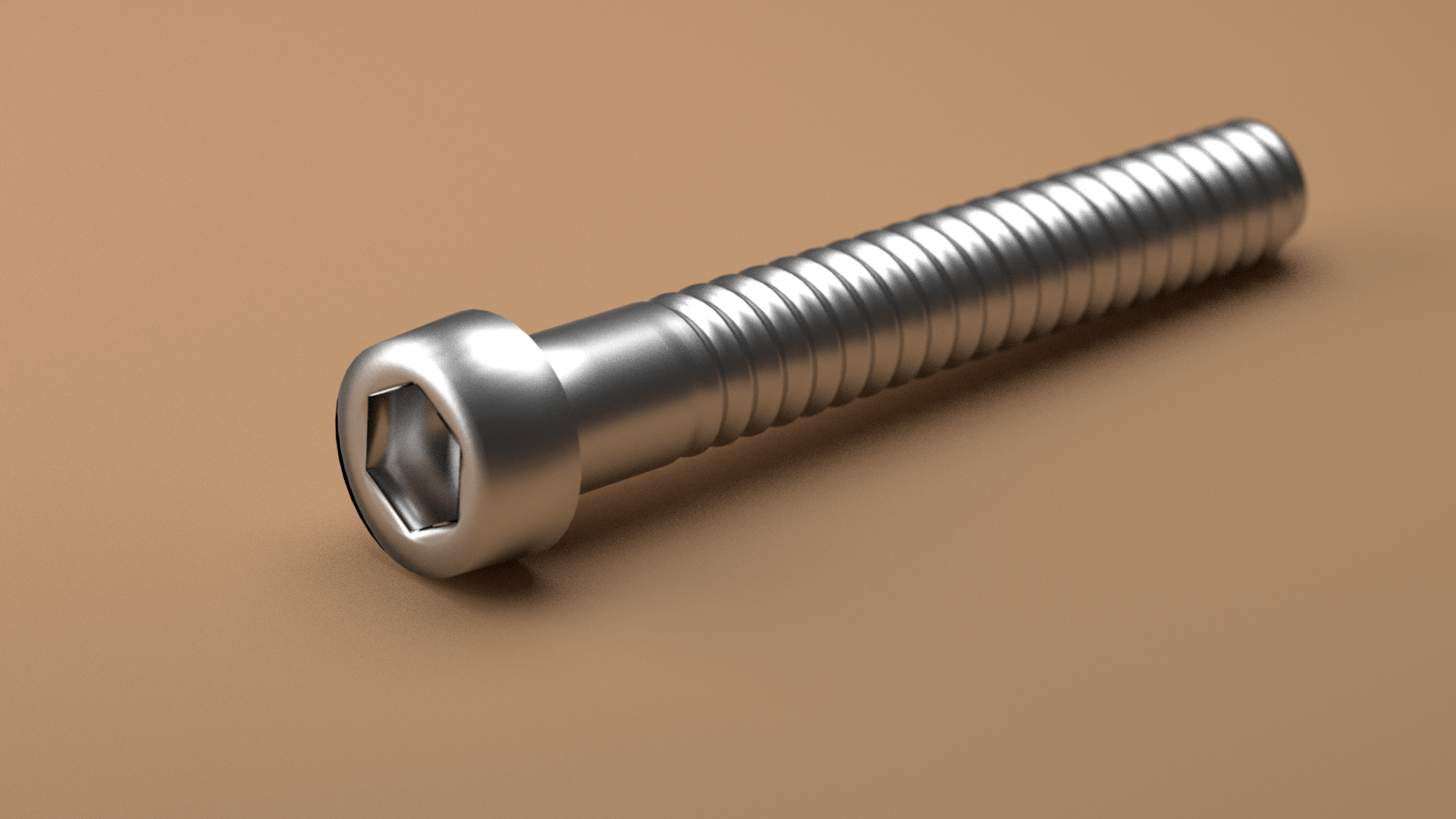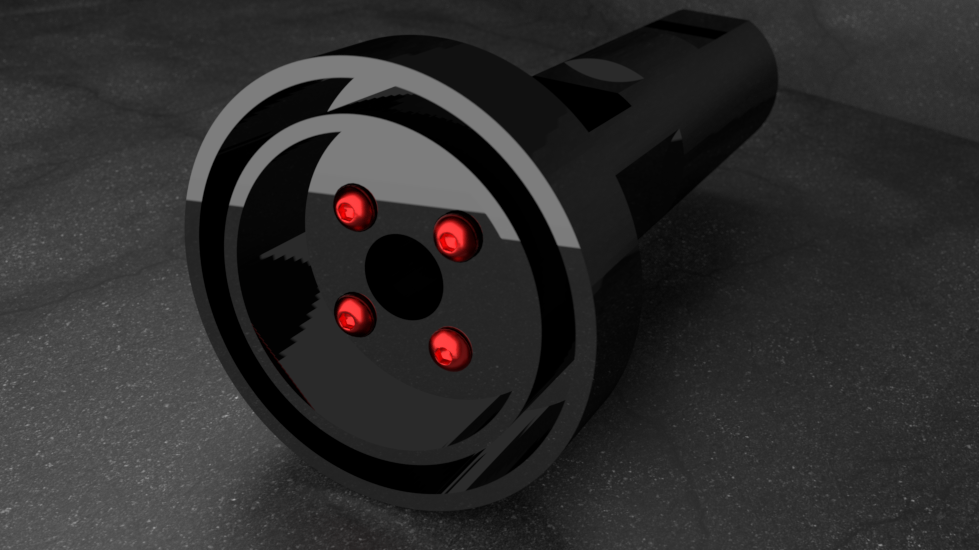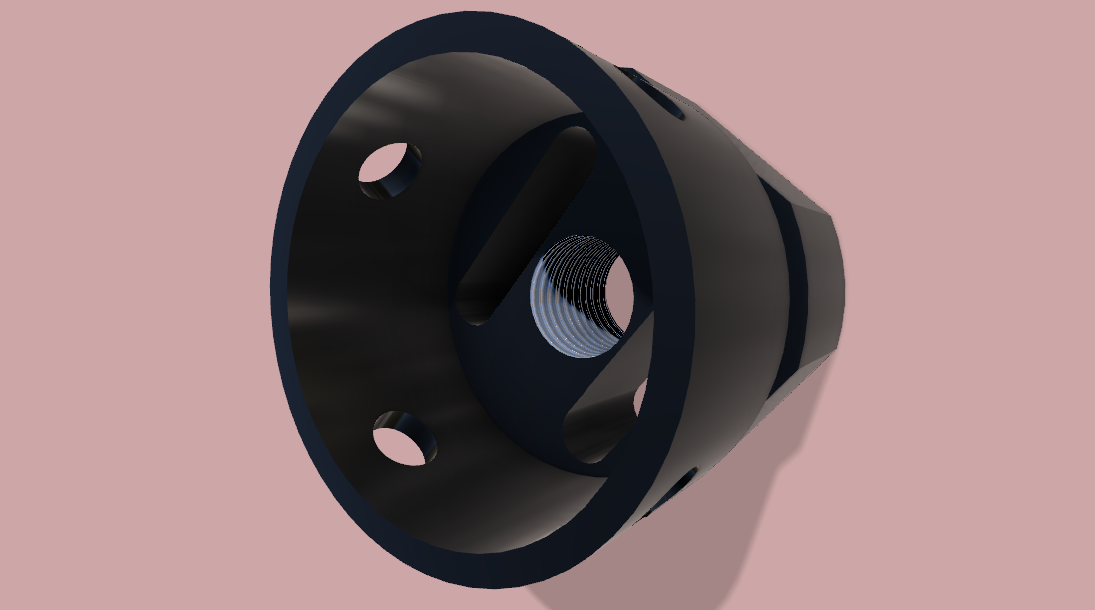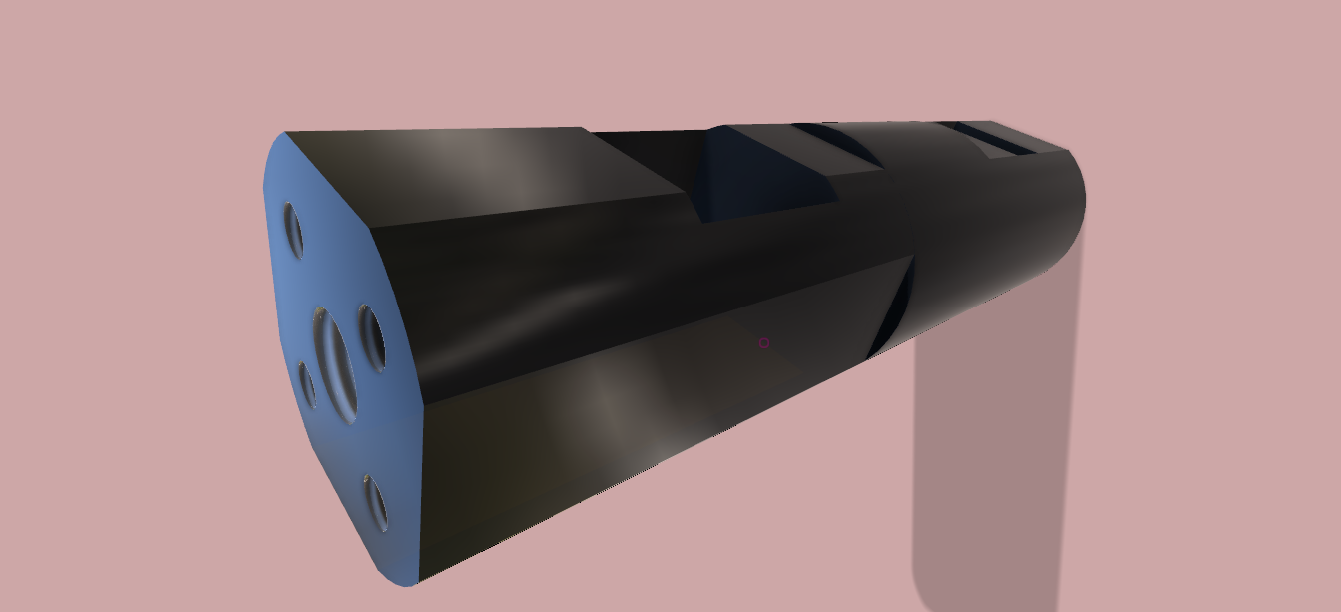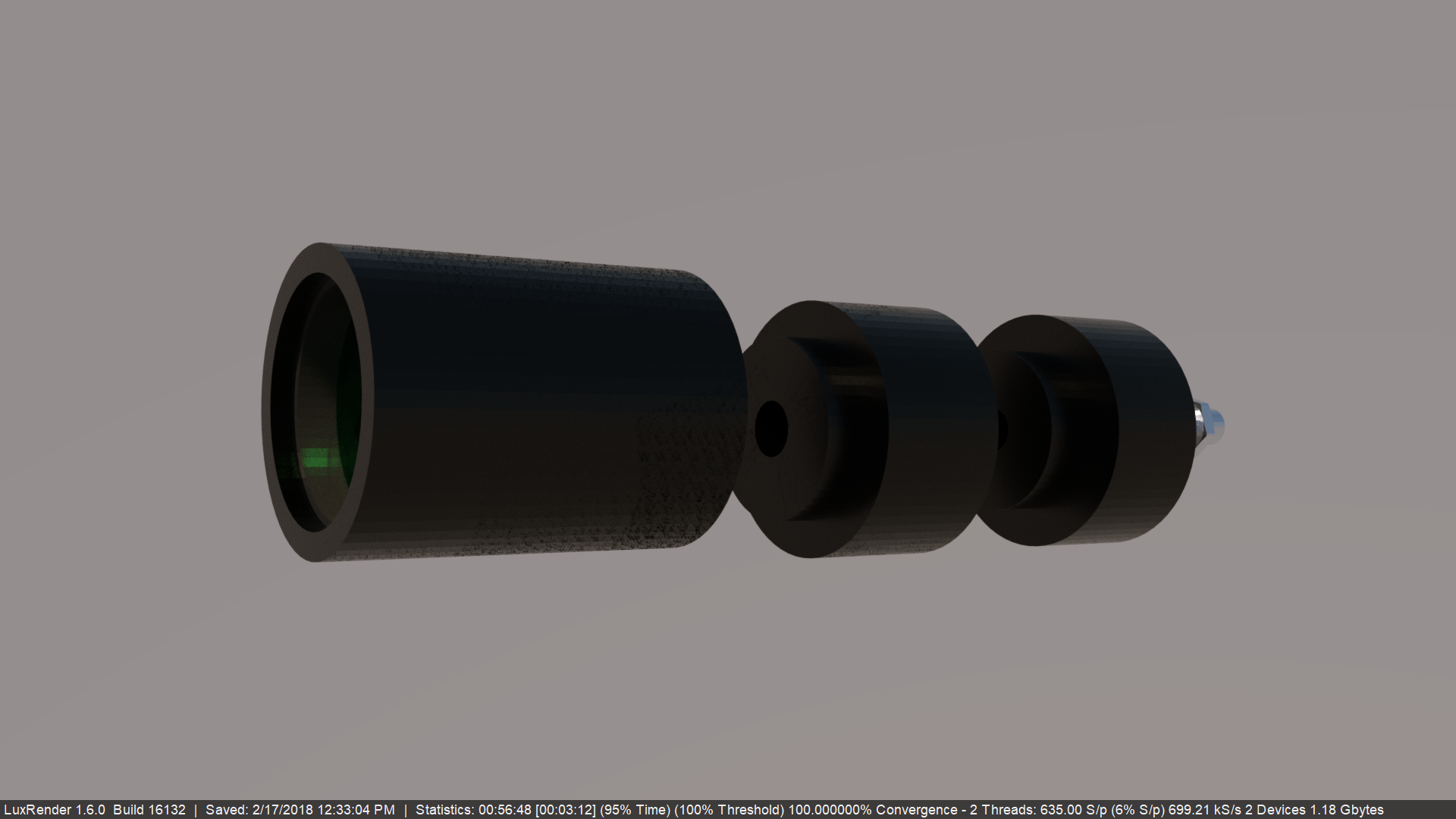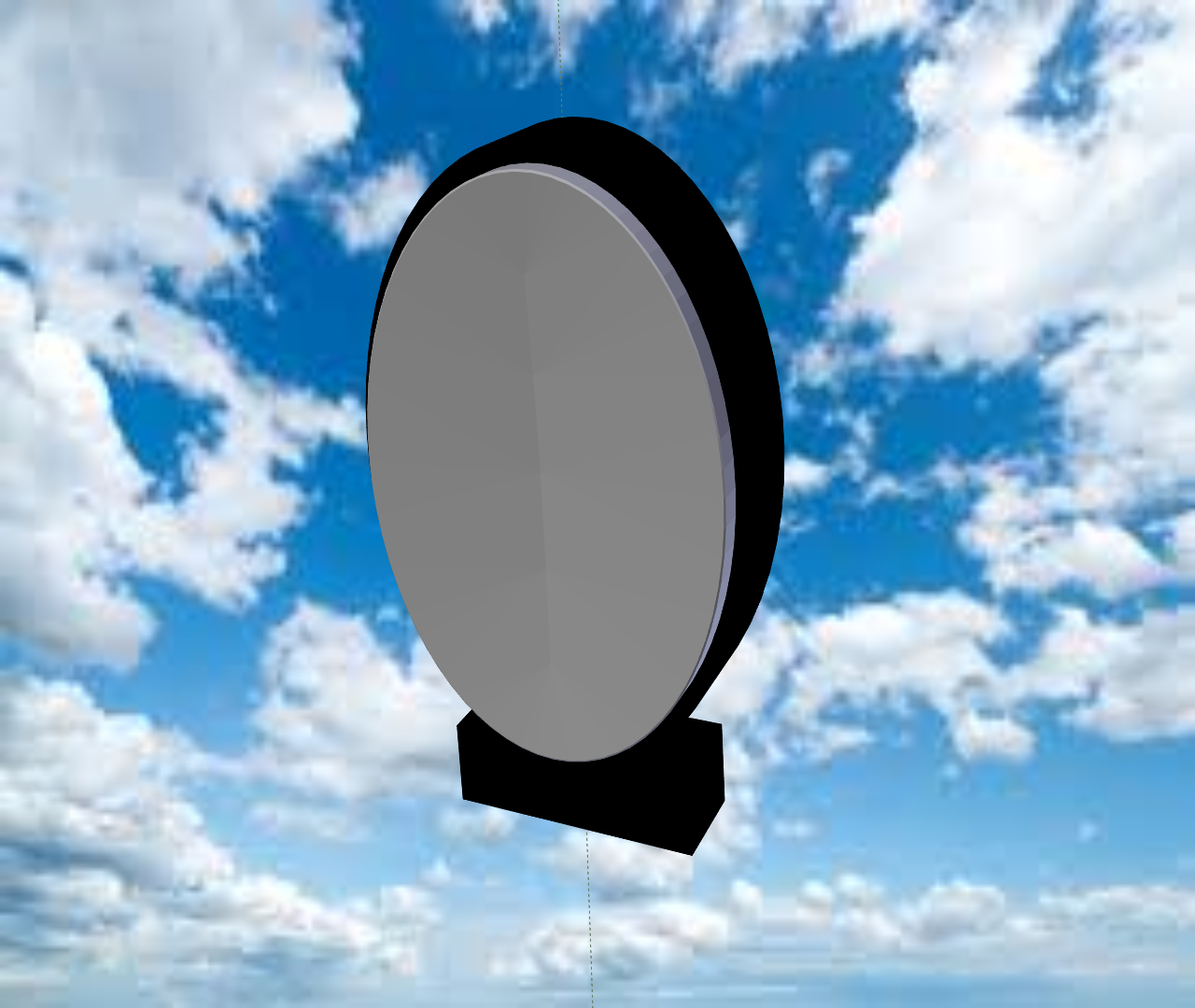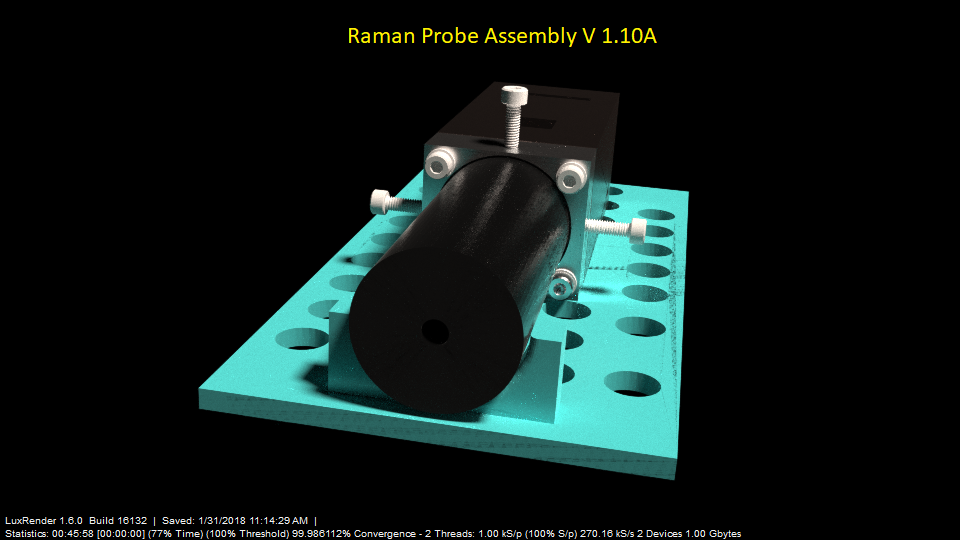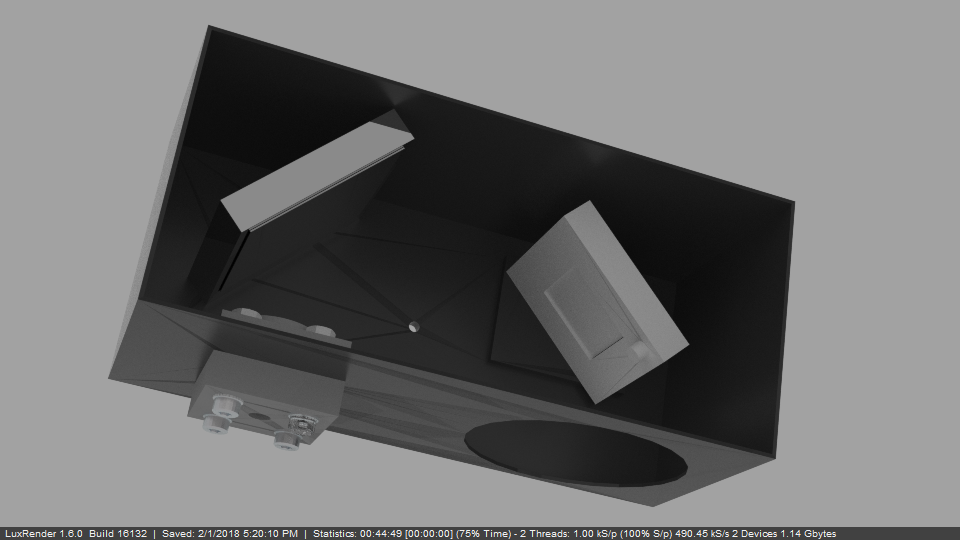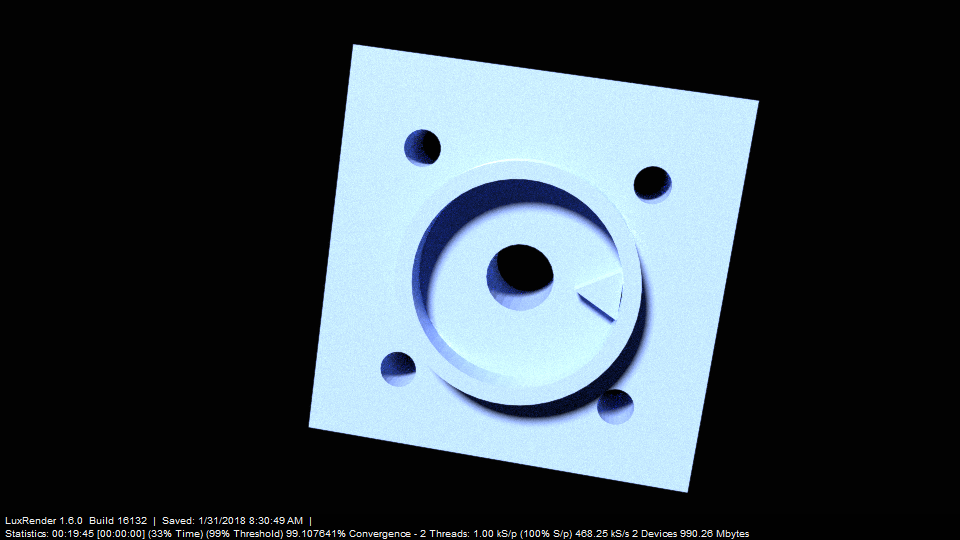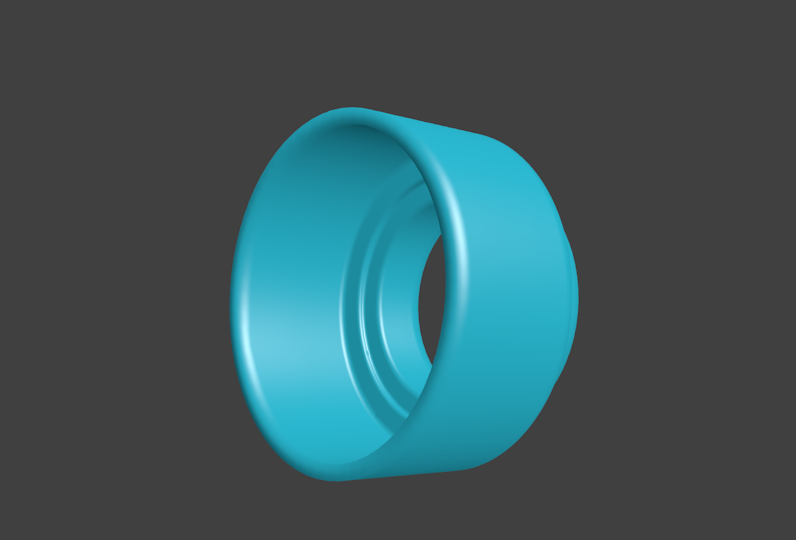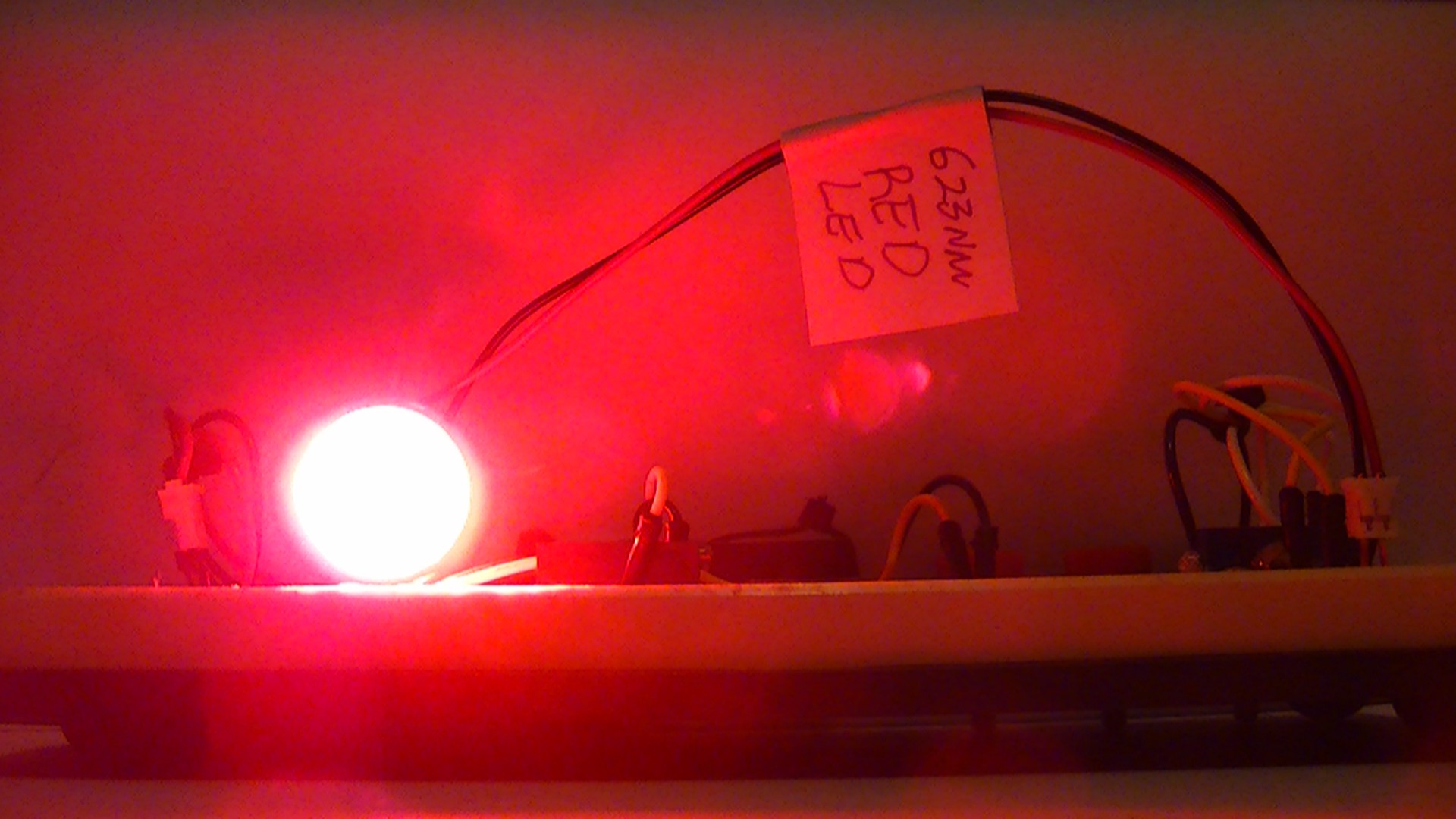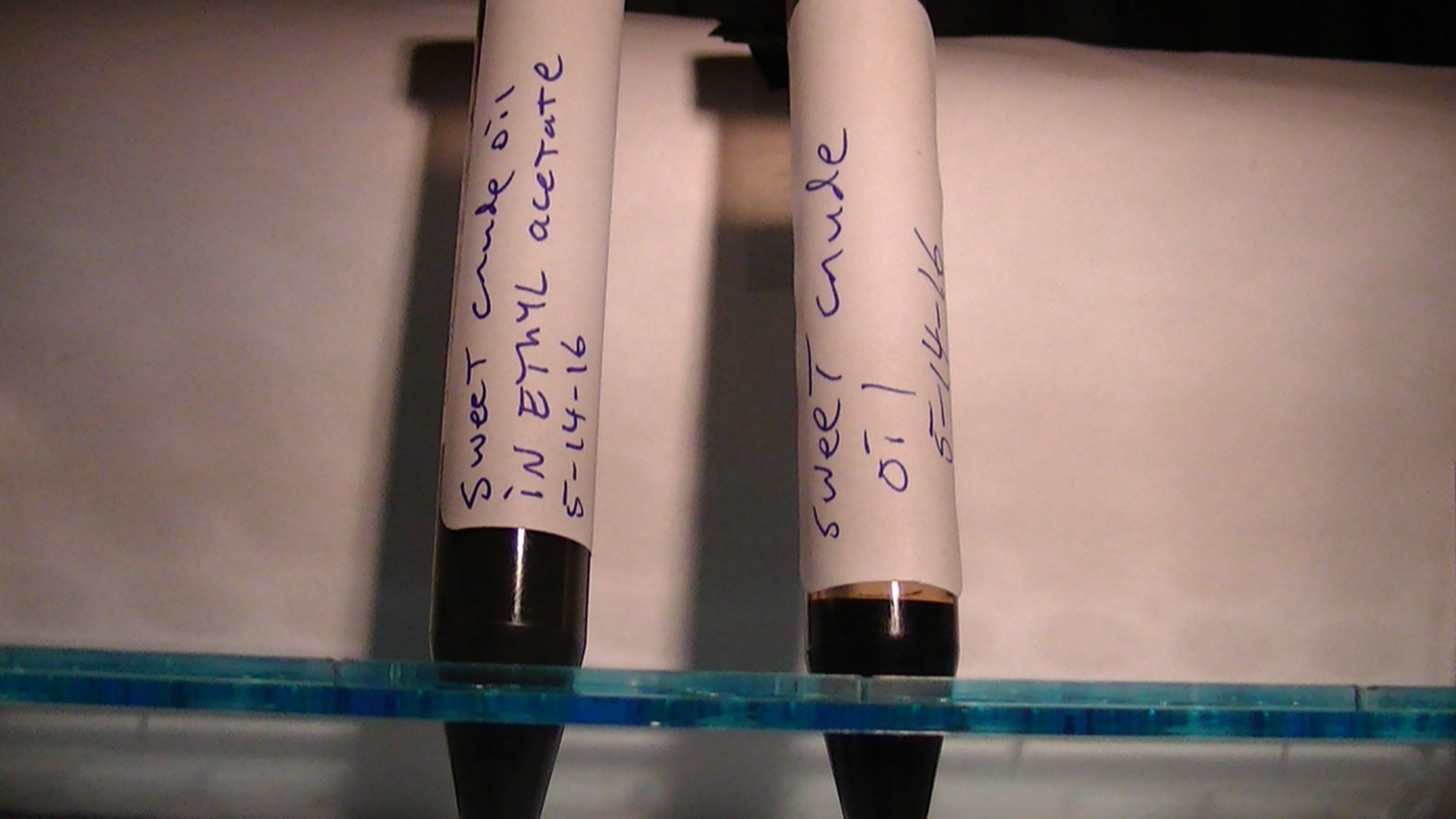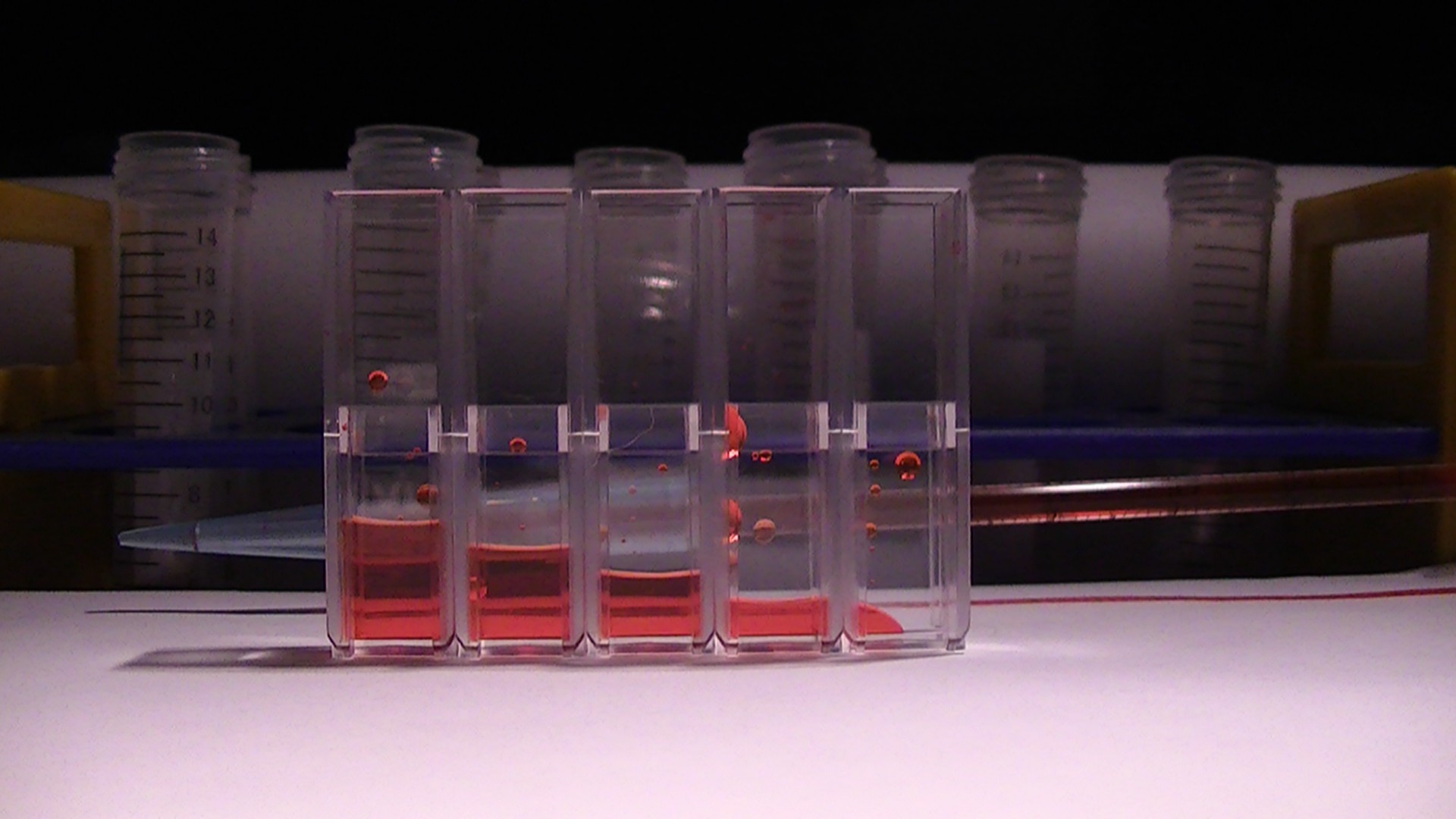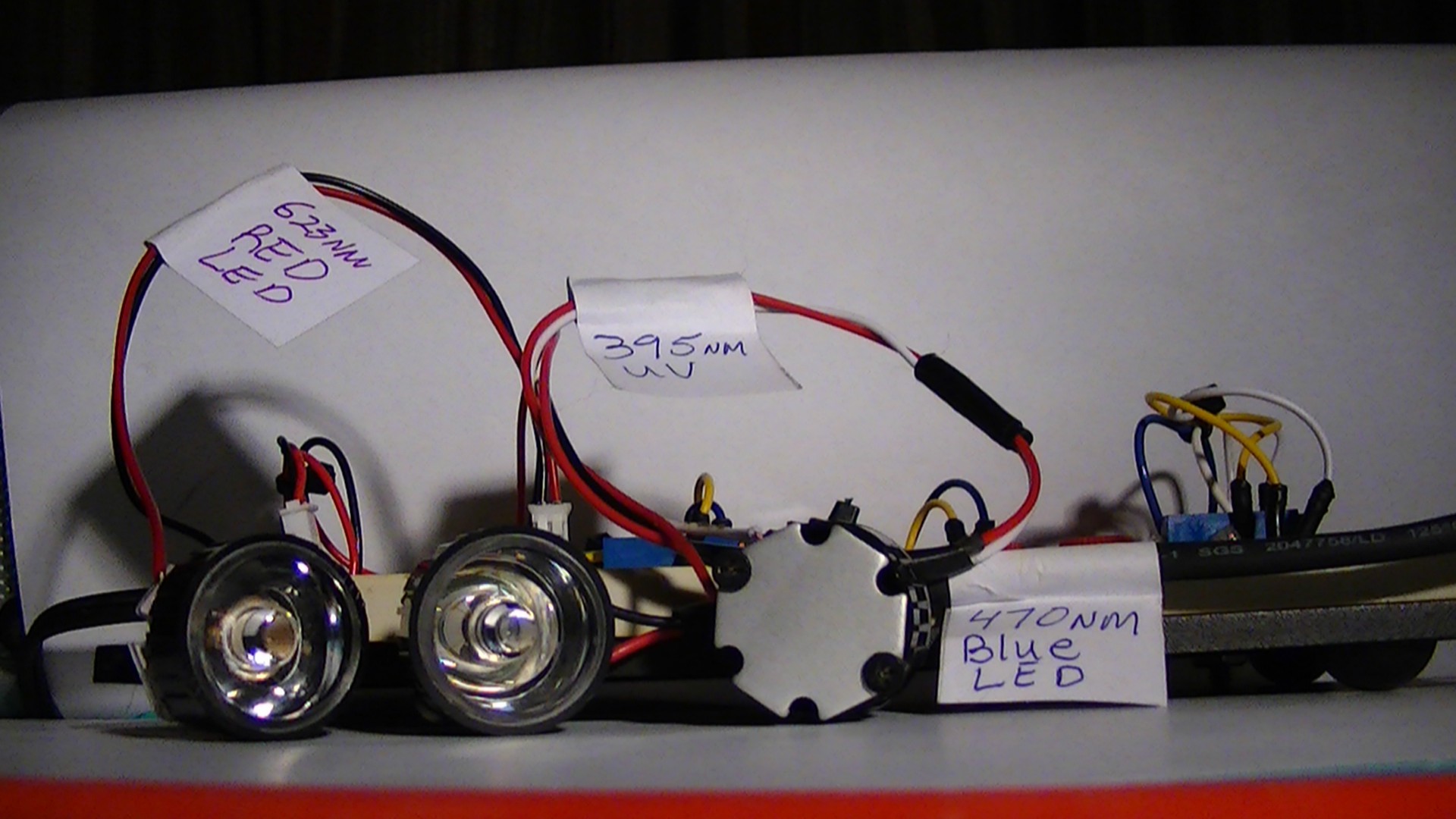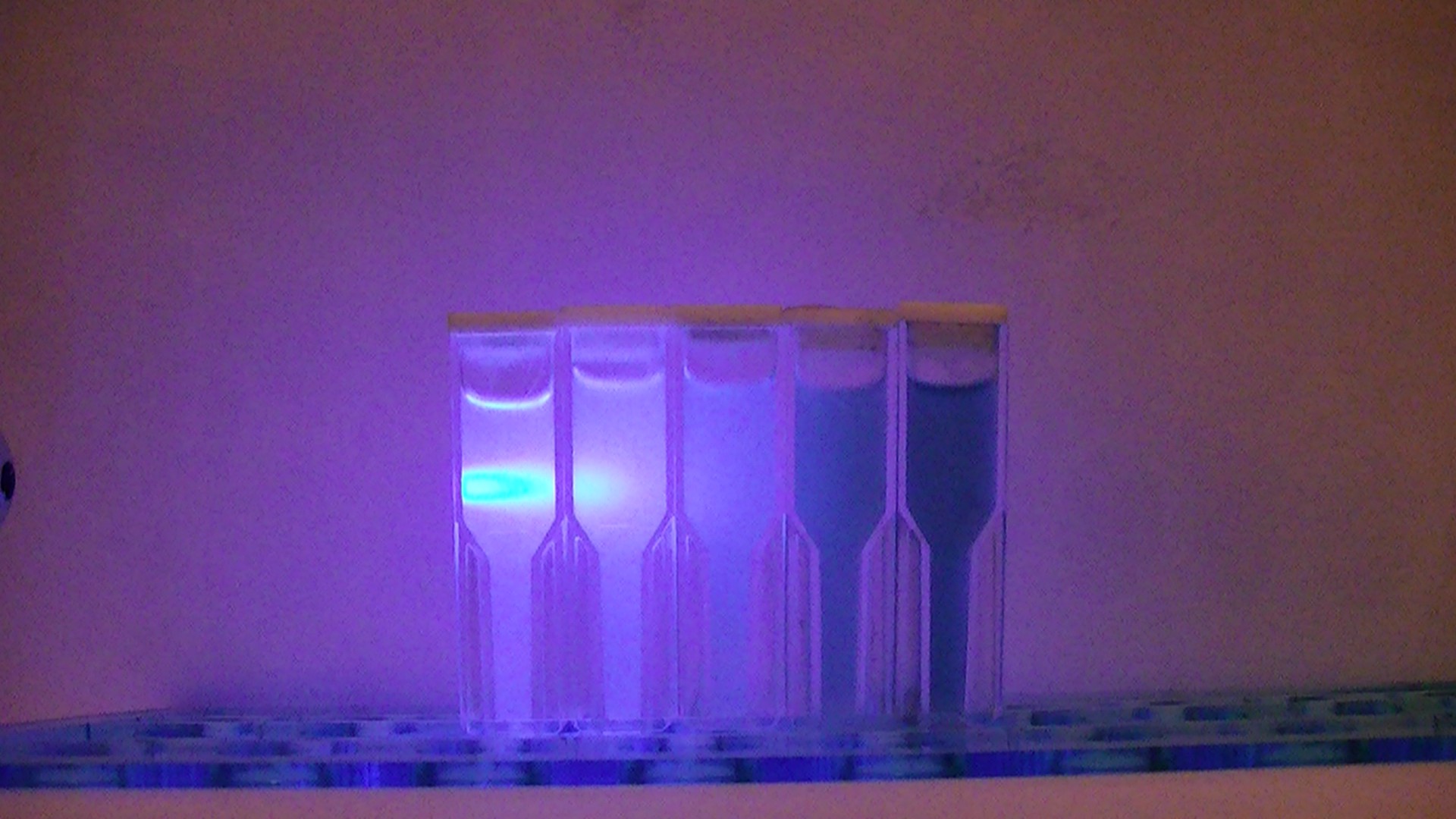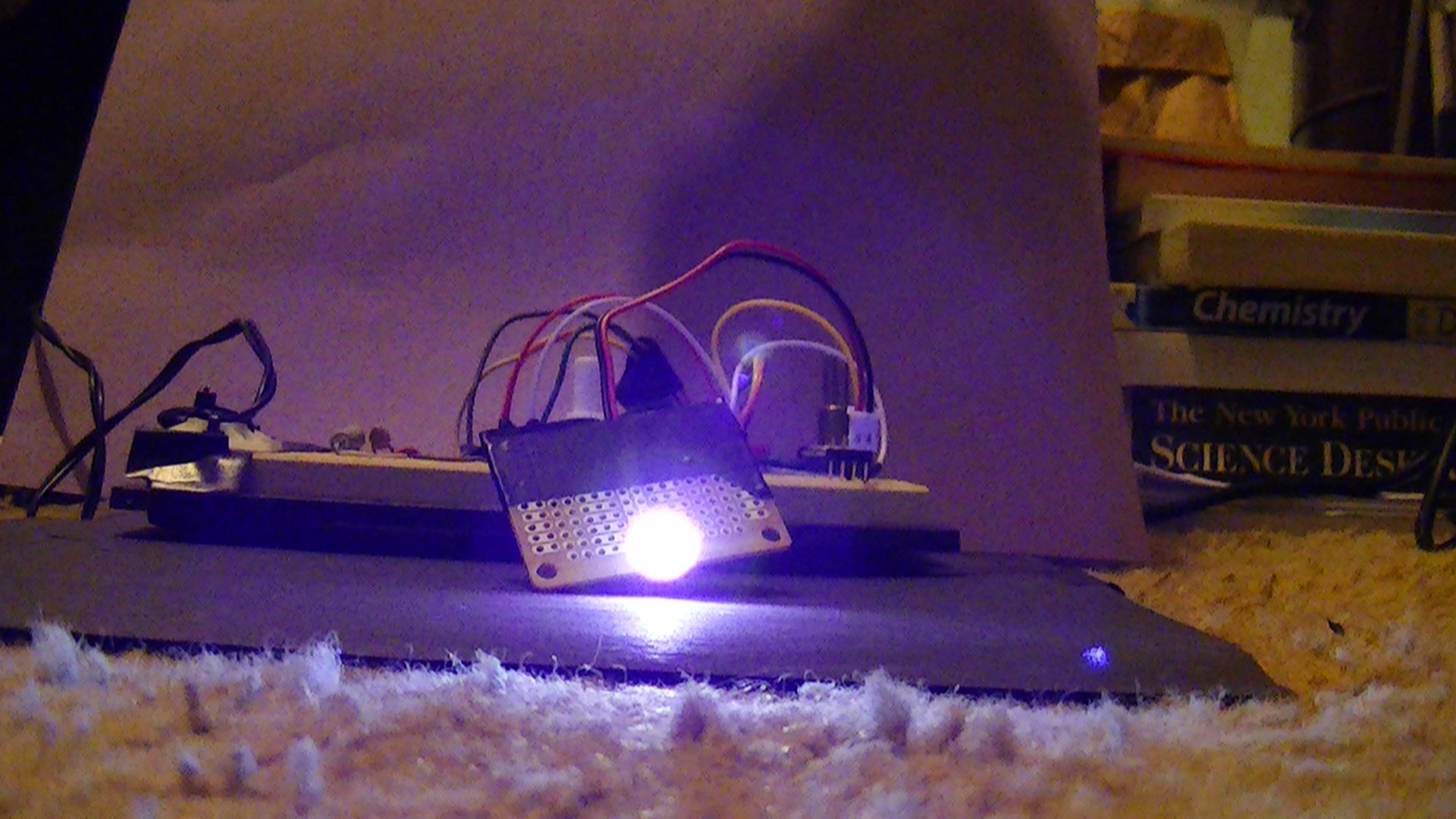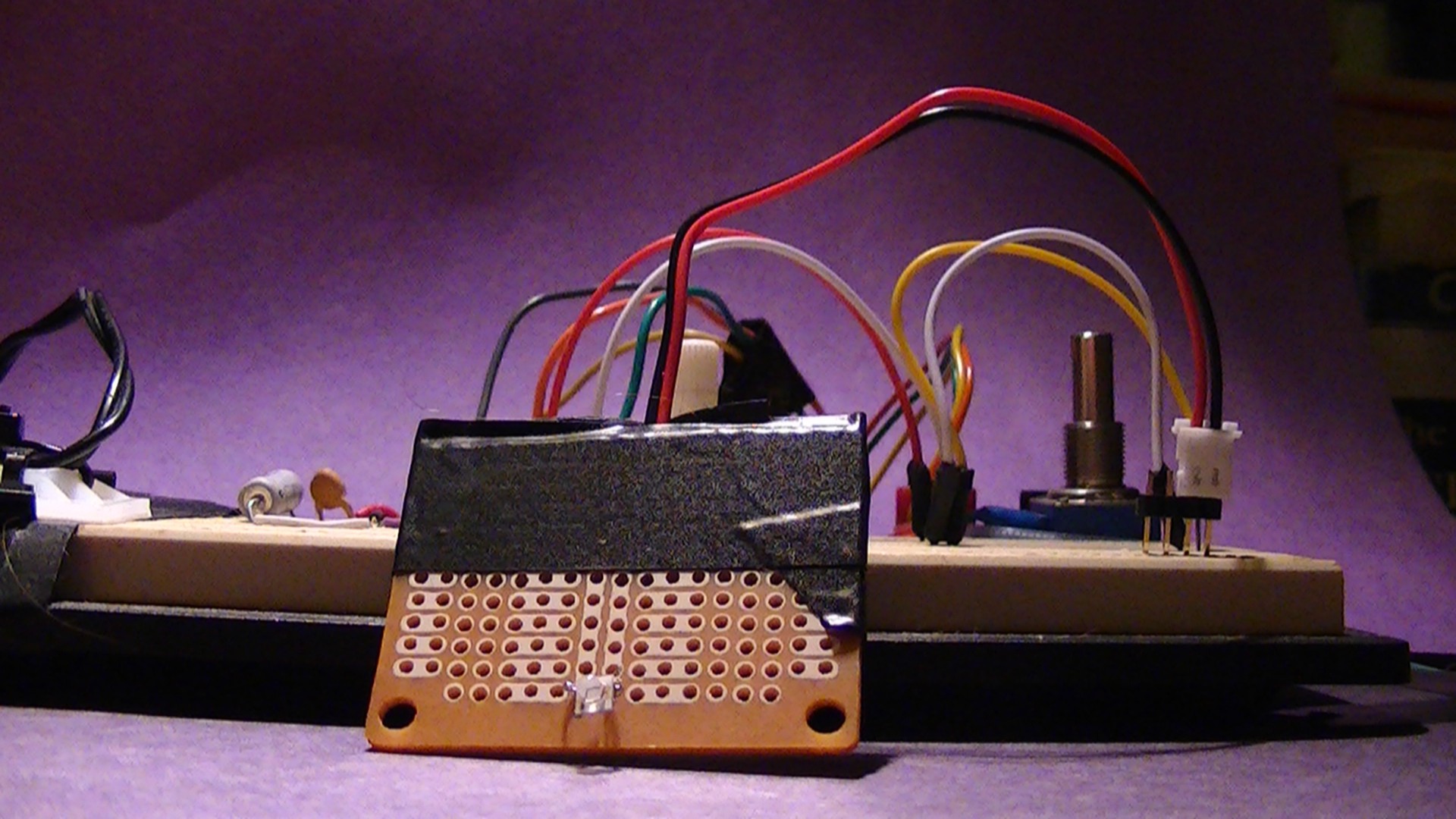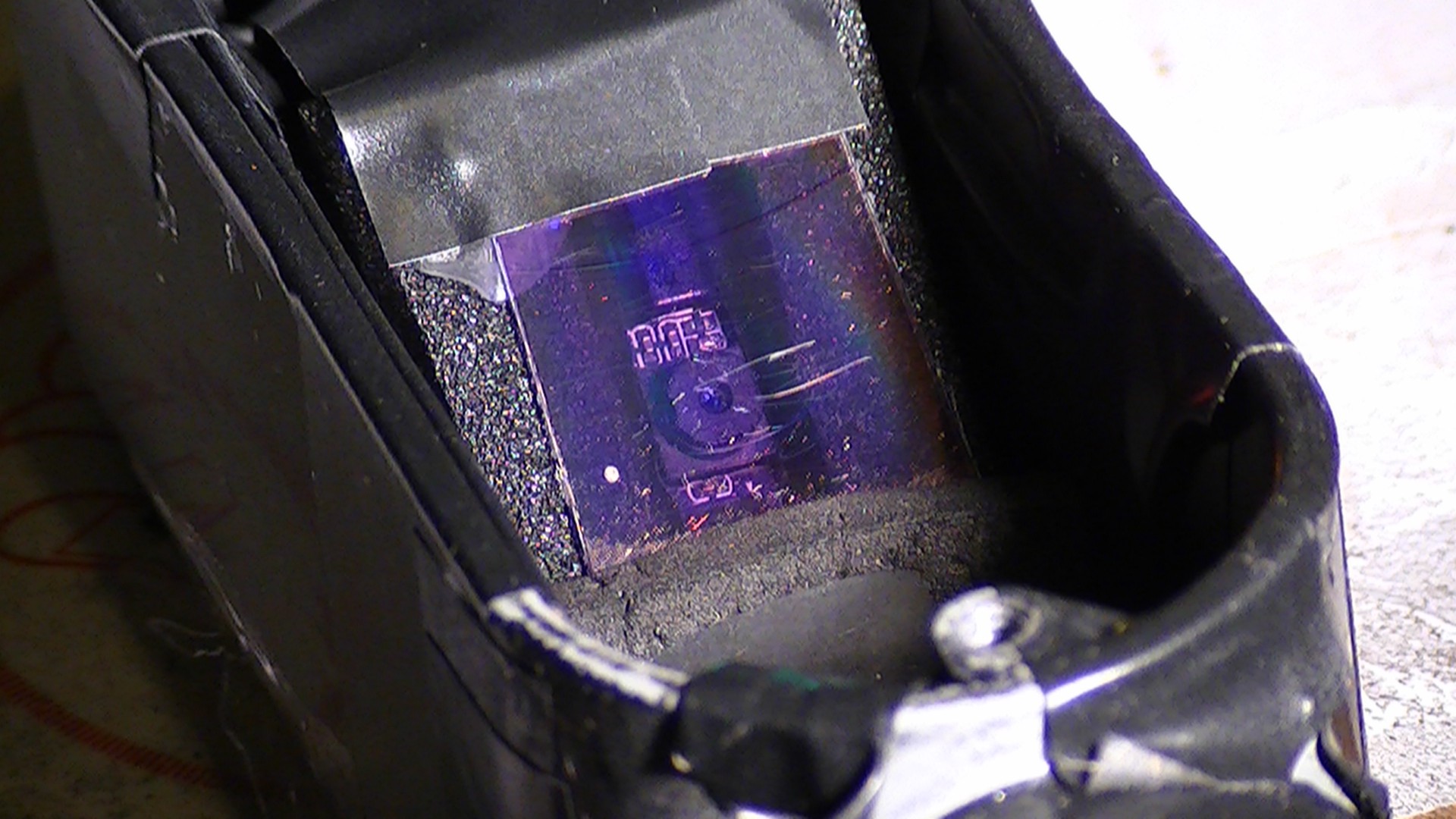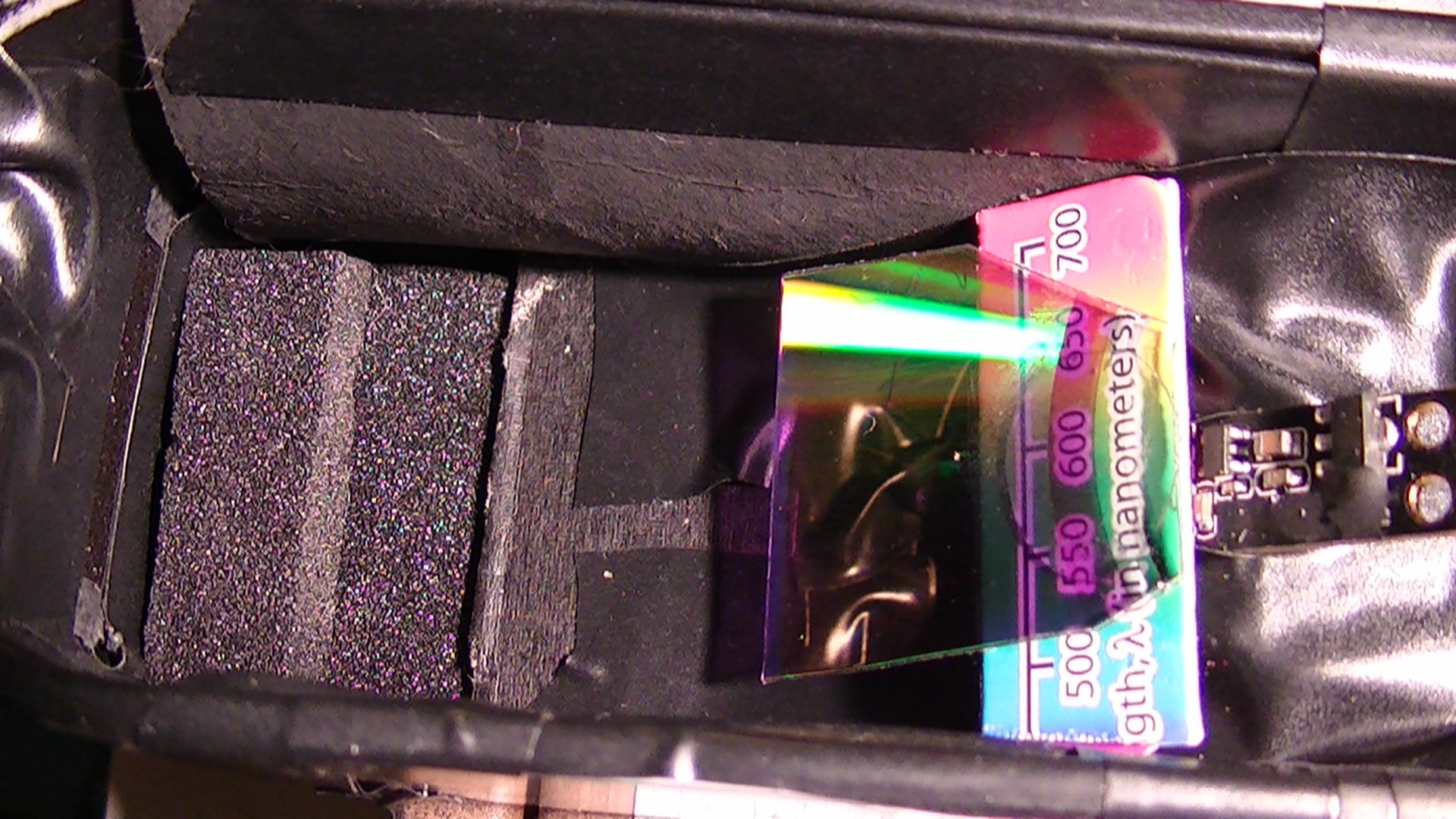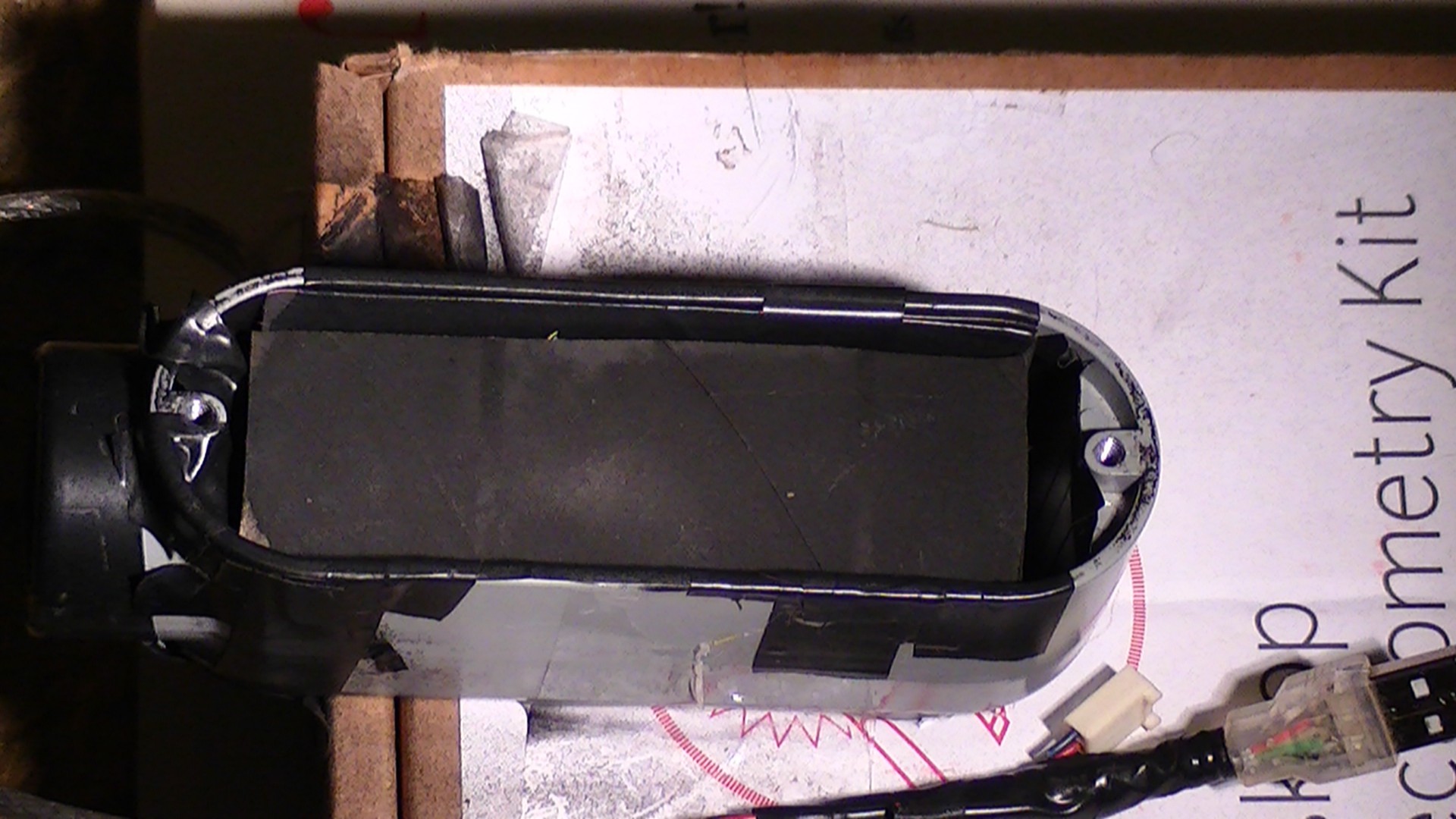-
Rendered Concept Images Blender 2.79 (Luxrender/Photoshop)
02/05/2018 at 13:19 • 2 comments"The Anvil" my rendition of an old but very useful tool...
![]()
These R 2 more components in my Raman spectrometer but I decided to get a little "artsy" with it. On the left is, a Holographic diffraction grating 25 x 25 x 6mm mounted on my design (the color's are an actual spectrum from a chemical dye called "Rhodamine b,") imaged from my spectrometer.
On the right is a silver reflective mirror, 50 x 50 x 3.5mm mounted on my design also.
![]()
The sound of 1 bolt clapping...
![]()
Some Abstract art...Done in Blender 2.79
ISO-4762 HEX Bolt metric (used for the Raman Probe project)
![]()
Final Conceptual assembly image for the Raman Probe v47
![]()
Raman Probe New Render Image
![]()
"2 Donuts & Coffee" this is my 1st full scene render in Blender 2.79, thanks to the tutorial video series from Andrew P Price@andrewpprice the blender guru:
![]()
It took me about 4 days to complete the video tutorial but it was worth it, it taught me so much more in depth working knowledge about Blender I never would have realized without it, anyway's this is my interpretation of "Coffee & Donuts" for breakfast.
Working with lightning
![]()
The two images below were rendered in Photoshop
Rendered in Photoshop
Interstellar Black Hole
![]()
![]()
![]()
![]()
These are images processed using Blender 2.79 and rendered using Luxrender 1.6.0
![]()
![]()
I just thought this Japanese lamp model was very beautiful and decided to do my own rendered interpretation of it.
![]()
![]()
![]()
![]()
![]()
![]()
![]()
![]()
![]()
![]()
![]()
![]()
![]()
-
PLX-DAQ v2.11 Dual Trace Transfer to Excel
09/24/2017 at 22:33 • 0 commentsThis is my second installment on using PLX-DAQ as an easy method of sending data from an Arduino or any AVR related MCU to Excel. Here I will be showing you how to process the data into a graphical chart for plotting it’s values…the easy way
-
PLX-DAQ Data Transfer To Excel Using An Atmega1284 MCU
06/19/2017 at 14:42 • 0 commentsI have Excel 2016 and Windows 10, two powerful platforms in my humble opinion, well thanks to an individual named Net^Devil over at the Arduino forums, he has a very clever program that I think perhaps has in large part solved a problem for me.
-
*Updated...UniPolar Stepper Motor Controller Optimized
06/19/2017 at 12:58 • 0 commentsUpdated V3.01 turret grating mount controller
-
Mega 2560 Stepper Motor Control Board
05/22/2017 at 11:20 • 0 commentsPrototype design for the triple turret grating assembly for the 3D-printable Raman Spectrometer
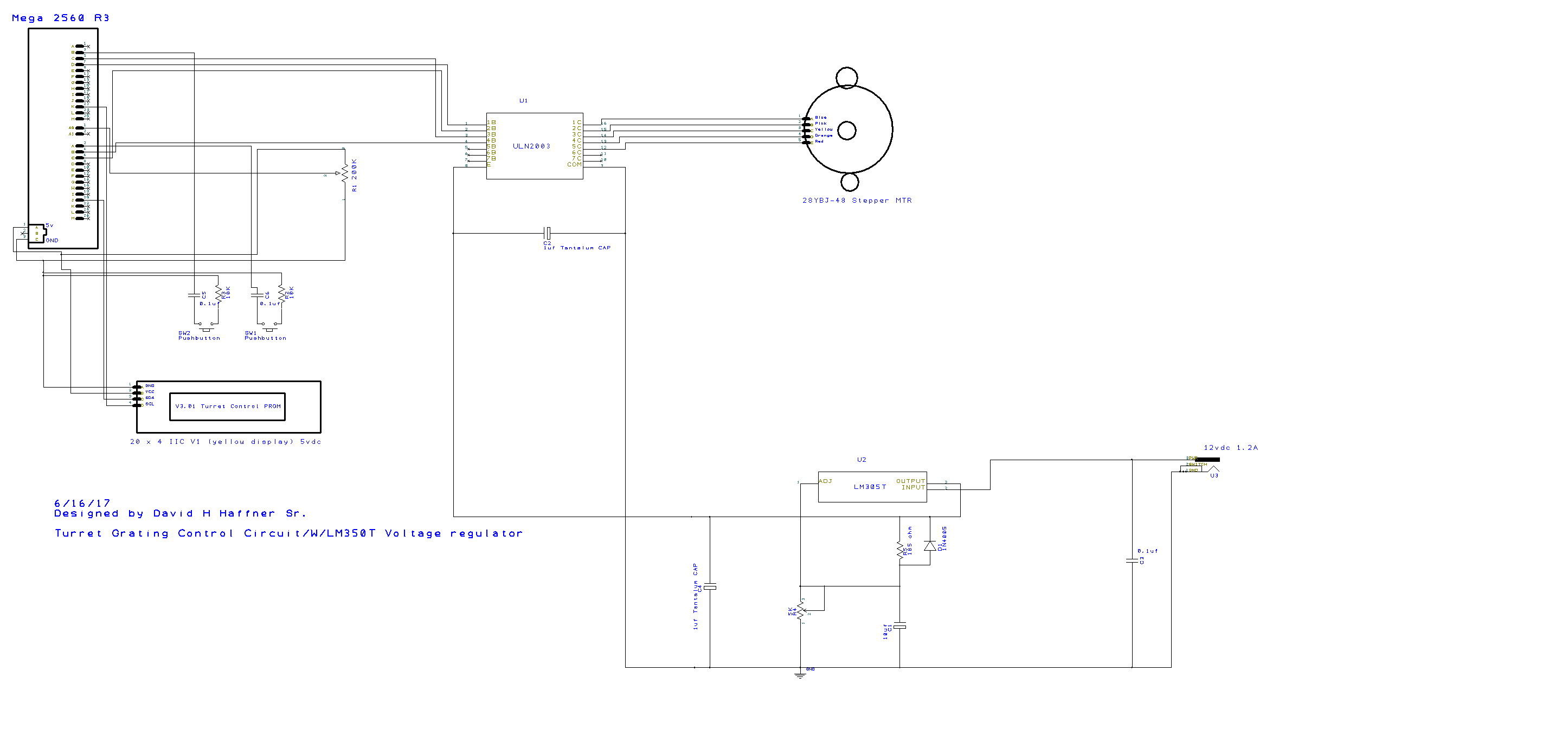
-
The ZEN of Design Simplicity
10/03/2016 at 22:28 • 0 commentsThere is a basic philosophy that drives my projects, ZEN, there is a saying; “Not thinking about anything is Zen. Once you know this, walking, sitting, or lying down, everything you do is Zen.”
Each aspect of my projects are rooted in these teachings, if you let your ears see and your eyes hear, then you can realize the subtle complexities that are, my simple designs.
In this way, I help myself by providing sometimes abstract knowledge, where its purpose seems convoluted in that which can be made to be much simpler.
The much finer genius lies in making the complex, seem very simple, there are no qualifiers needed to justify the look of how my projects turn out, they just are, almost every part I make is by hand, or formed by hand, from the most basic materials I can use, there is a beauty in that.
A lost art that is never really lost, just ignored, so I center myself and I am mindful of everything I am doing, that is ZEN.
Finally, “To follow the path, look to the master, follow the master, walk with the master, see through the master, become the master.”
-
Research & Development Page [Chemistry & Spectroscopy]
09/13/2016 at 08:23 • 0 commentsThis section is dedicated to research and development in physical chemistry and spectroscopy
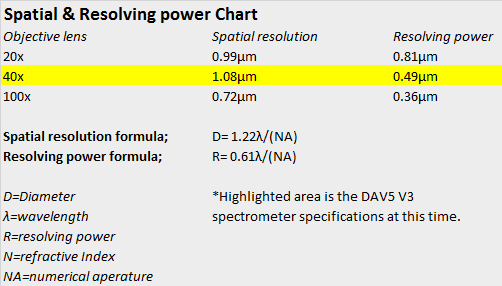
Effects of Solvents on Fluorescence of Biological Dyes Section ll
3 Biological Dyes in Water, Ethanol and Methanol
Author, David H. Haffner Sr.
8/29/2016
Abstract
In most polar solutions, such as water and alcohol solutions, ions diffuse more rapidly than covalently bonded molecules, because most ions are smaller than most molecules, and because of their greater polarity caused by a negative or positive charge, ions more readily bind to the molecules of the solution wherein diffusion occurs, and thus flow readily with the solution, while covalently bonded molecules, especially if they are nonpolar or large, will diffuse very little in a polar solution such as water or alcohol, because they will not mix with the solution.
Analytical reagent grade solvents and compounds were used for preparations. Denatured Ethanol; 90.5% 200_Proof Ethanol(CAS: 64-17-5) 4.5% IPA (CAS: 67-63-0) 5% Acetate (CAS: 109-60-4) Duda Energy. Methanol; 99.65+% Concentration_Formula CH4O (CAS: 67-56-1) Duda Energy. Distilled water (0_TDS {total dissolved solids}] _NOT deionized.
DH4.0 v4 Spectrometer; CMOS Camera Module: JDEPC-OV05, ruling density of the DVD grating is 8.5 GB which equates to 2770 lines per mm. The slit width is now 0.09mm and a spectral bandwidth of 2.13nm, using the new Gillette razor blade design I made.
Software used in data processing is; Spekwin32 v1.72.2P6
Using [6] 15ml 120mm length centrifuge test tubes, each tube had a transfer of 2 drops from a glass eye dropper of the appropriate biological dye. Then distilled water with a TDS (total dissolved solids) reading of 0, was transferred along with the volumetric equivalent of 10% ethanol and Methanol v/v in the appropriate sample containers.
Dyes used were; Rhodamine B; CAS: 81-88-9 (powdered form) 479.01 g/mol, Eosin Y; 1% Aqueous solution CAS: 17372-87-1 and Safranin O; 1% Aqueous solution CAS: 477-73-6
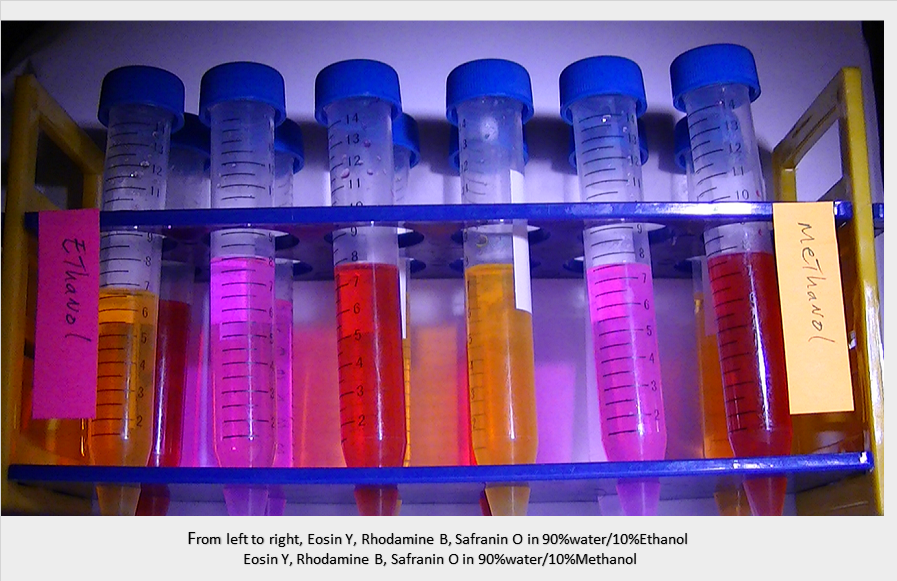
Introduction and Discussion
Ethanol is primarily a non-polar solvent but does exhibit some polar properties. Methanol on the other hand is primarily polar, as is Isopropyl alcohol, in this follow up study to the one done with Isopropyl alcohol and 5 biological dyes, I examined the effect of 2 solvents with opposite polarities, Ethanol and Methanol. The same experimental conditions were applied in this study as they were in the previous one “Effects of Solvents on Fluorescence of Biological Dyes” posted on; 8/27/2016.
I expected to see a much stronger effect on the fluorophores in the polar solvent than what the data suggested, Safranin O had the most dramatic red shift @ 10nm+ for Methanol than for Ethanol, which the dye’s emission peak was @ 585nm (ethanol) and @ 595nm for (methanol.) Rhodamine B was more sensitive to Methanol than the Ethanol solution which can be seen in figure.6. Water is also a polar substance, so the addition of a non-polar solvent such as Ethanol in theory, should have decreased the solvent effect on the excited state energy level.
The opposite then, should be true for the Methanol solution, increasing the solvent polarity should produce a correspondingly larger reduction in the energy level of the excited state, and this can be seen to a degree in figure.6 also in the lower panels for the absorption data plots, absorption for Eosin Y and Safranin O have a more defined and tighter bandwidth, were in the top panels of figure.6 for Ethanol you can see a more spread out bandwidth for Eosin Y and Safranin O.
What I found truly fascinating was for Rhodamine B, the excitation states are behaving in the opposite manner than what one would expect, but this is what I suspect is happening; If a certain amount of rhodamine B is uniformly distributed in a solvent that it is soluble in, such as water, it should fluoresce without any self quenching effects. However, in presence of the ethanol in the water, solubility becomes a problem and the rhodamine b molecules get encapsulated...
Read more -
Interesting Images...From my Experiments...
07/30/2016 at 22:22 • 0 comments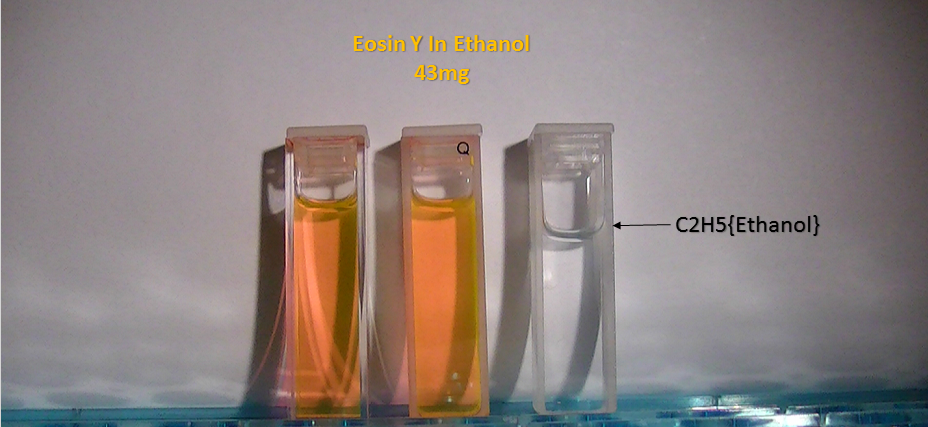

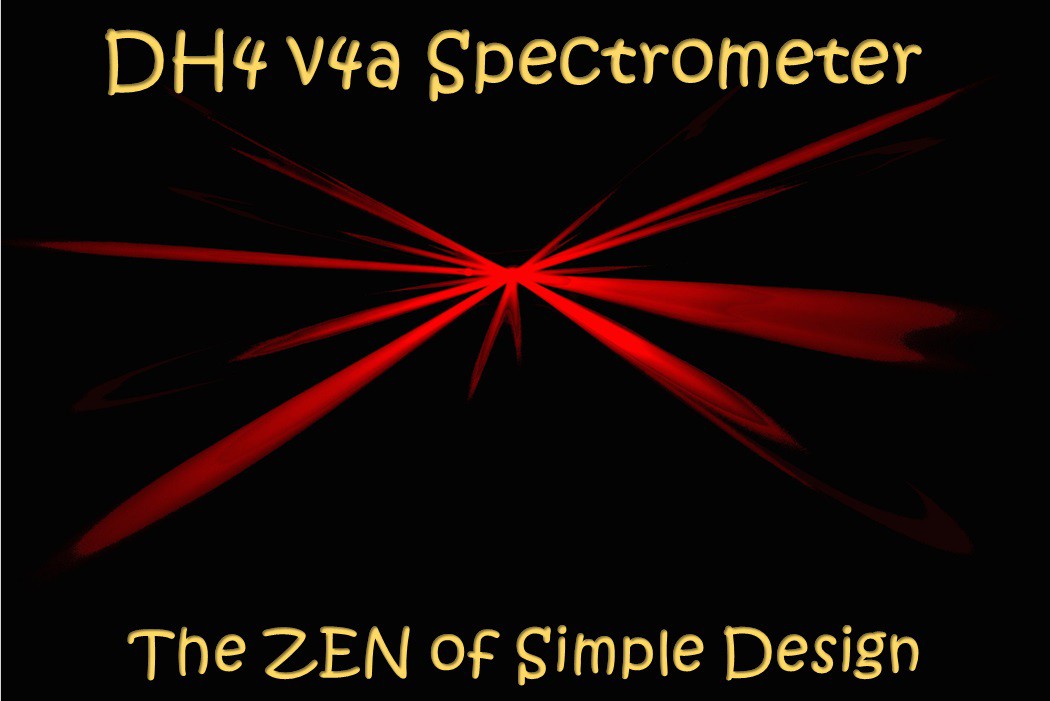
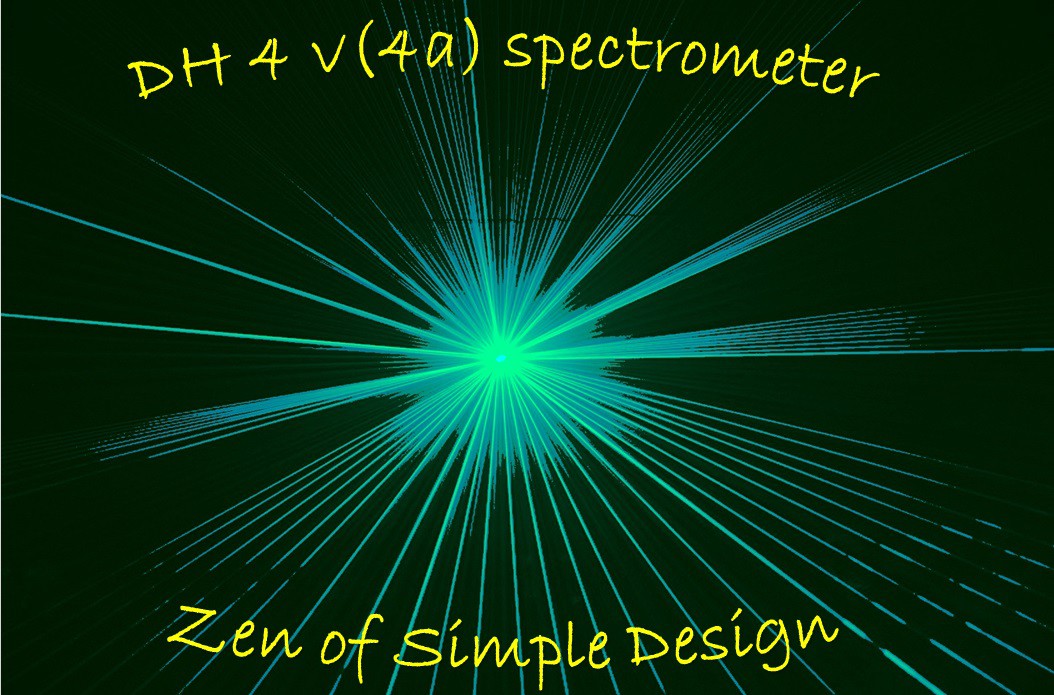

DH 4.0 v4 Spectrometer
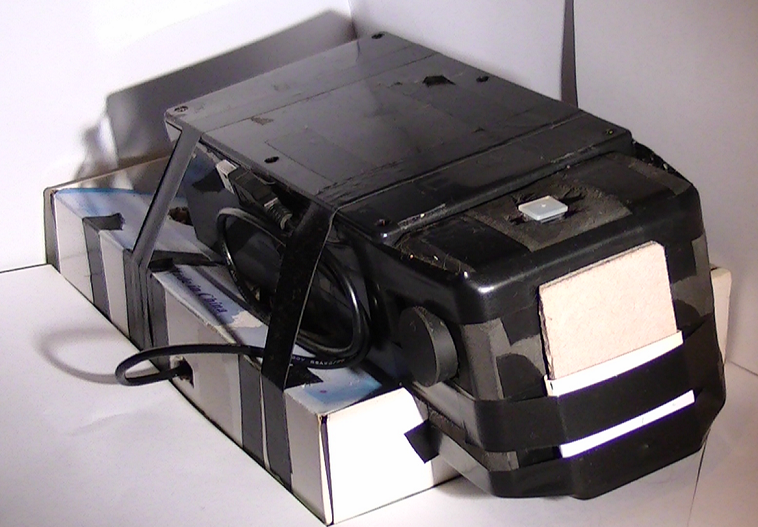
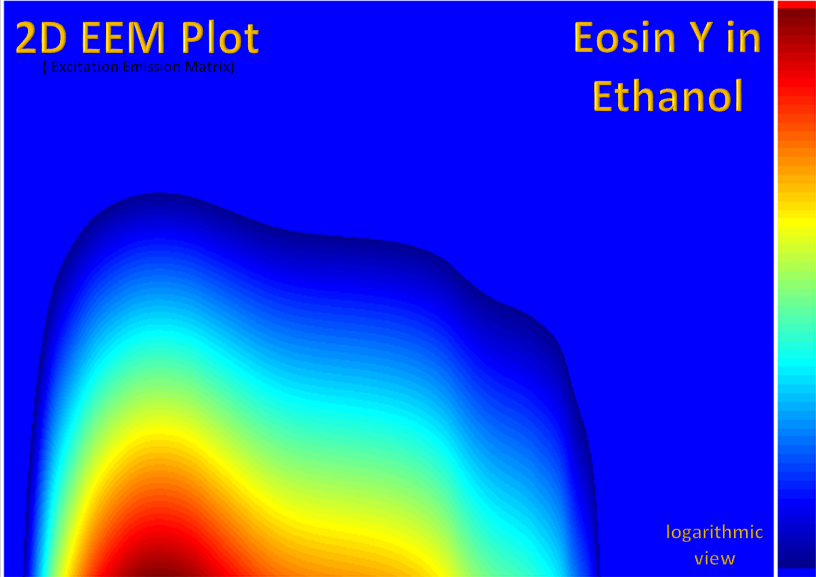
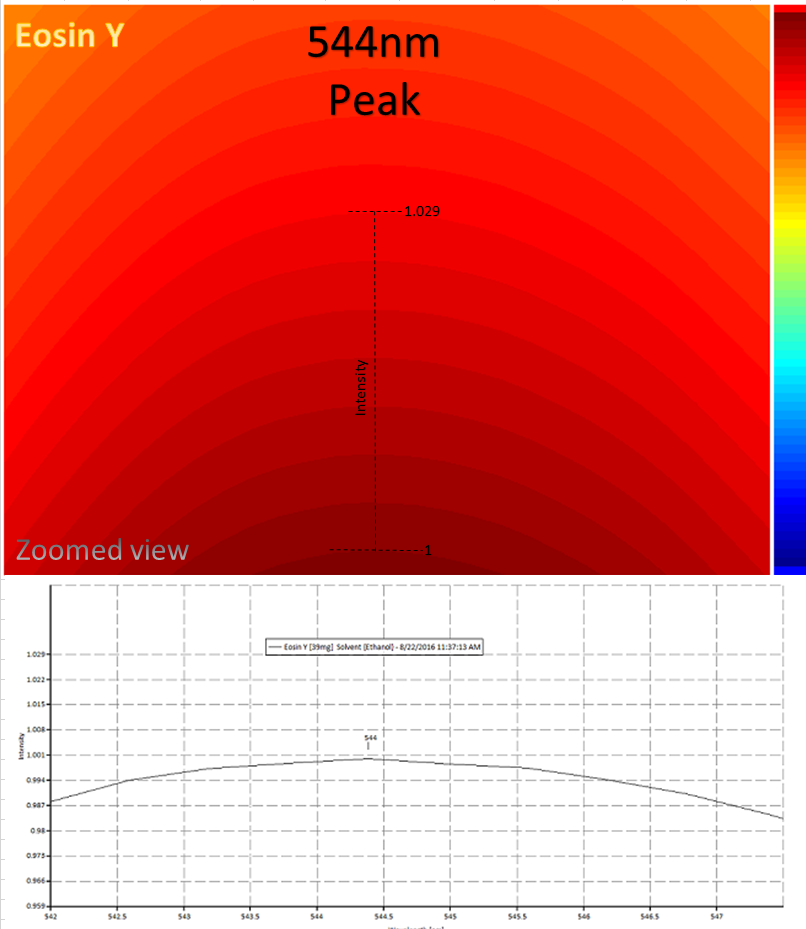
EEM 2D Graphs illustrating how imperfections such as scratches, smudges and finger prints on a cuvette can have an effect on spectral data collection.
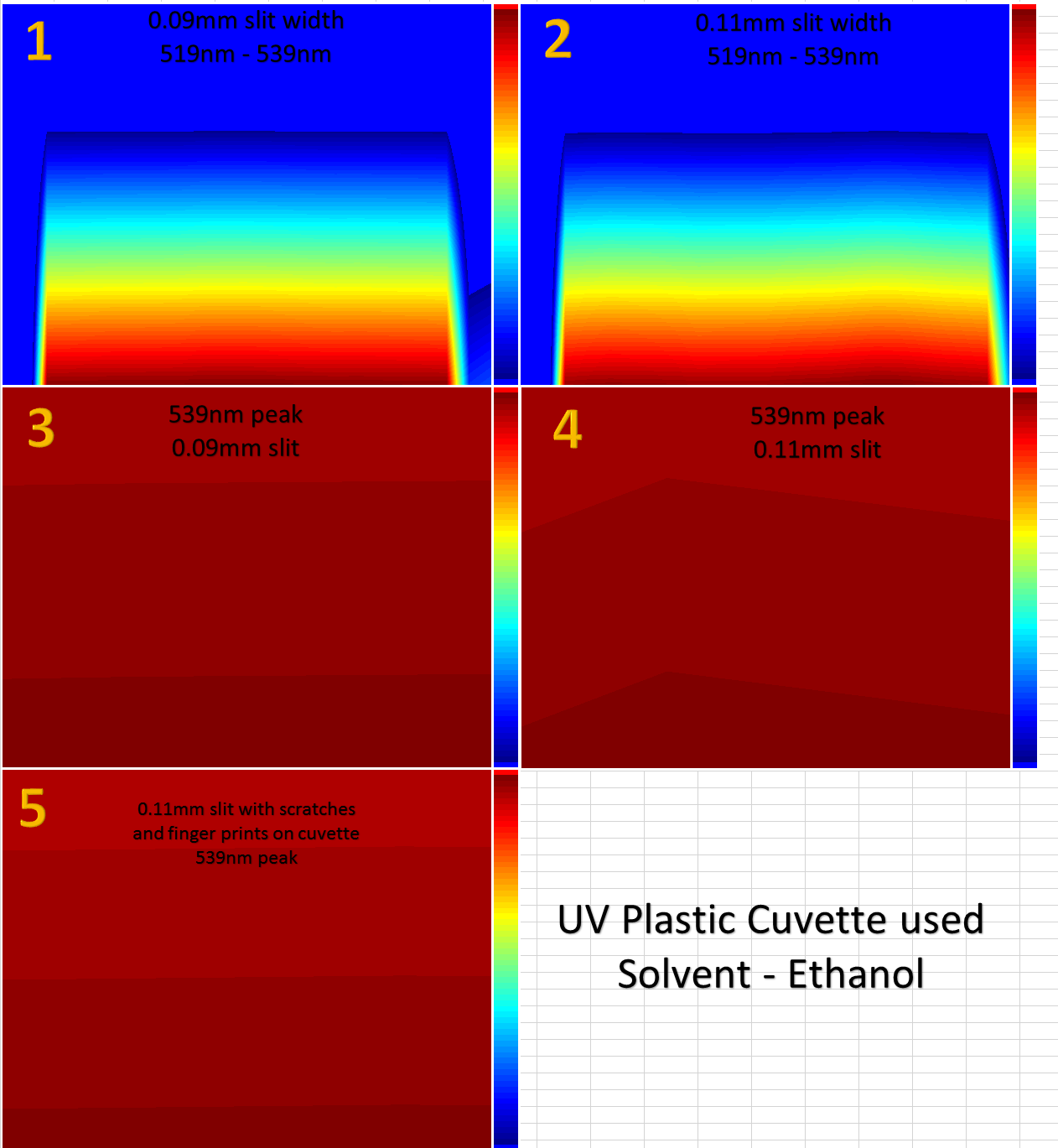
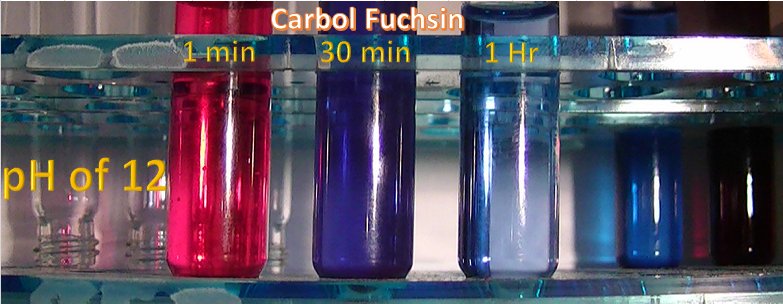
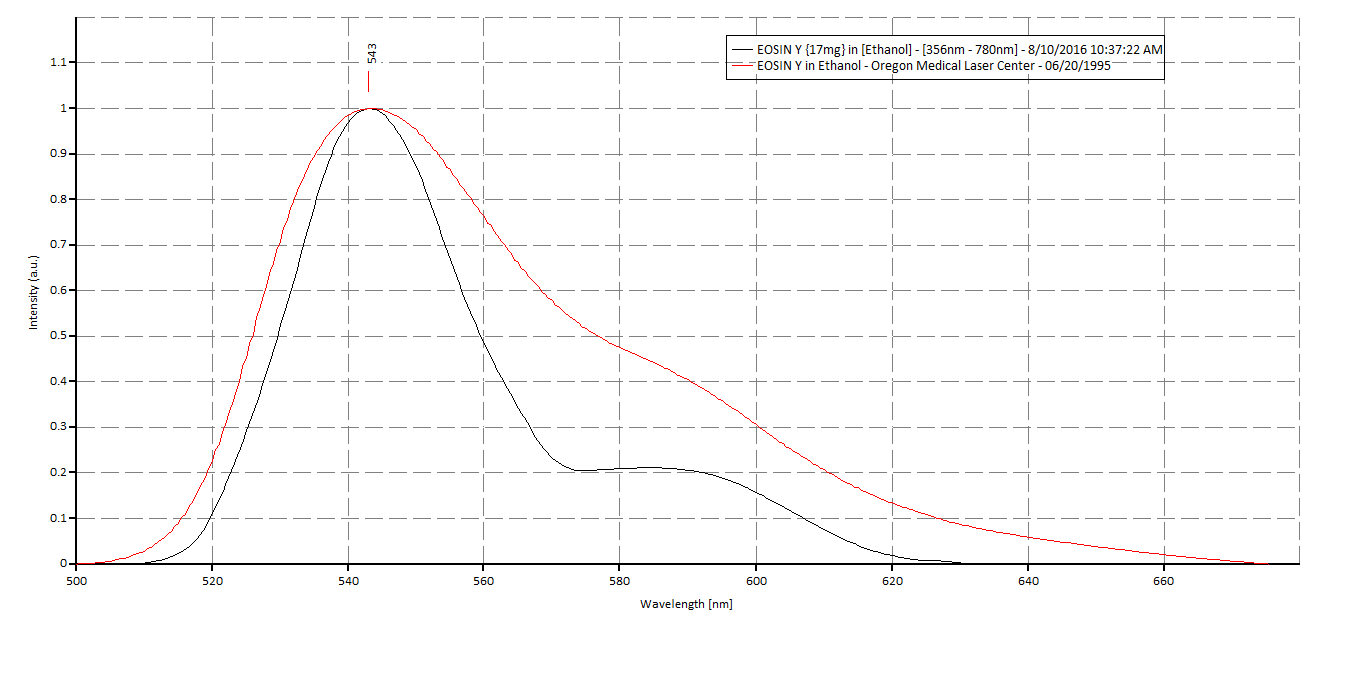
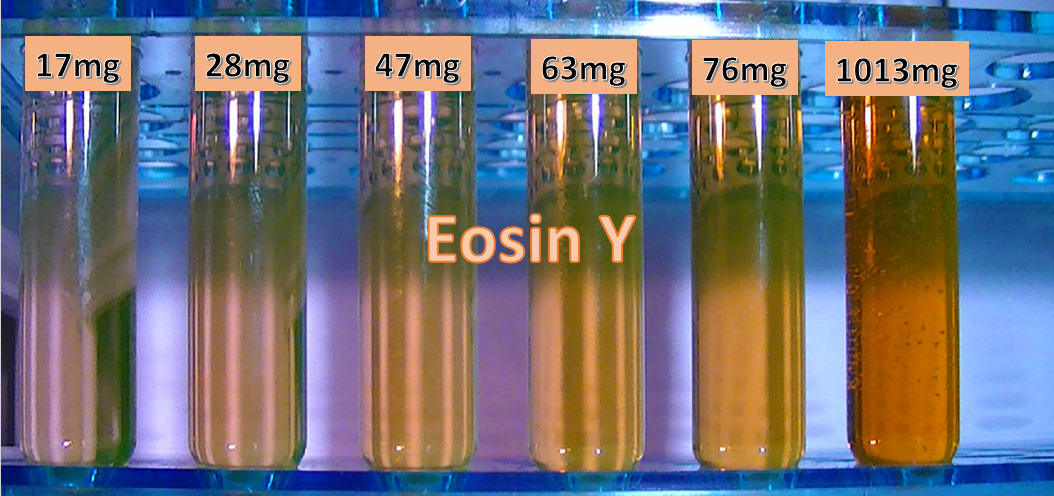
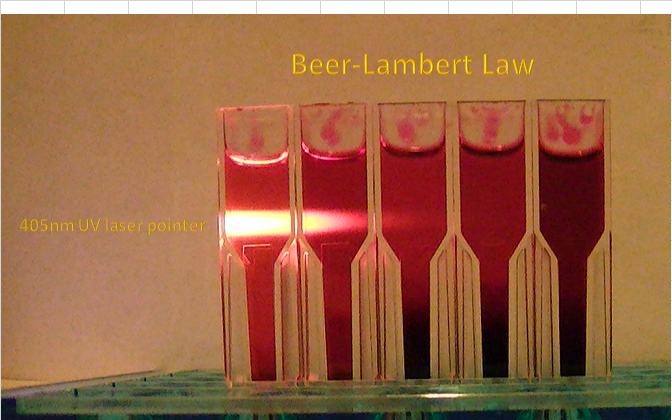
These are some pictures of my lab equipment and experiments over the past few months
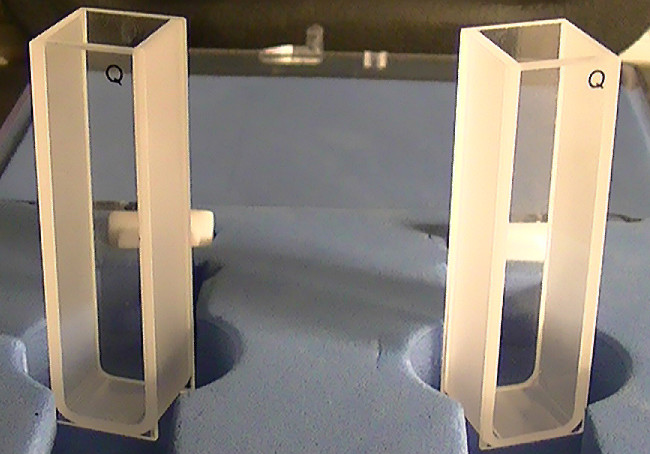
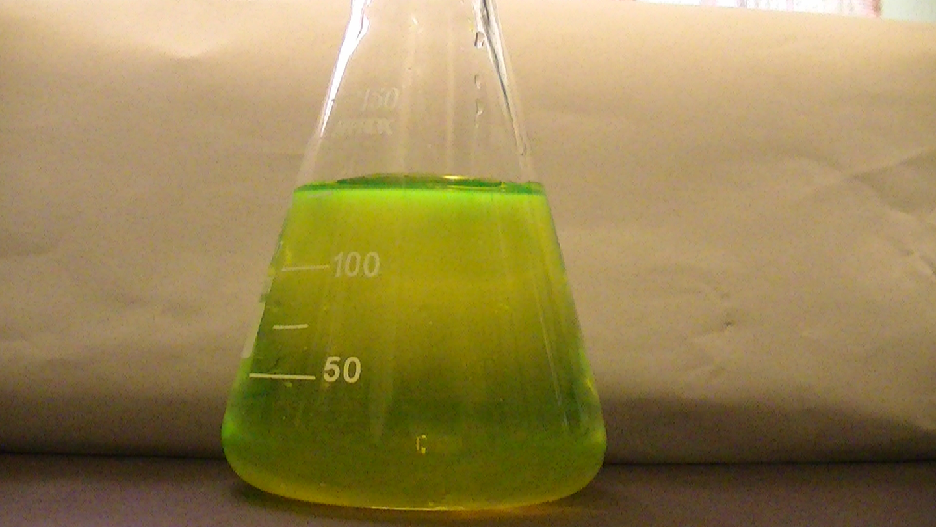
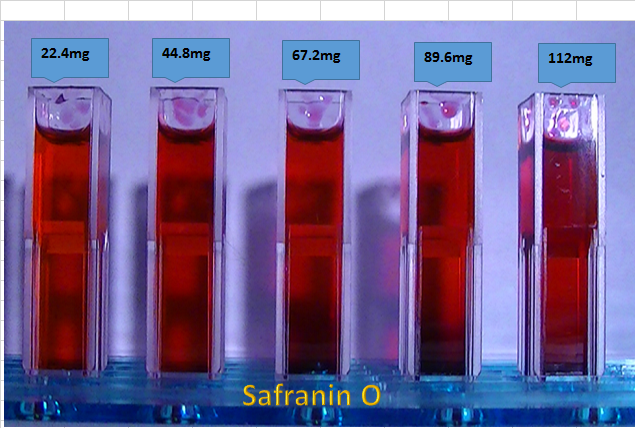
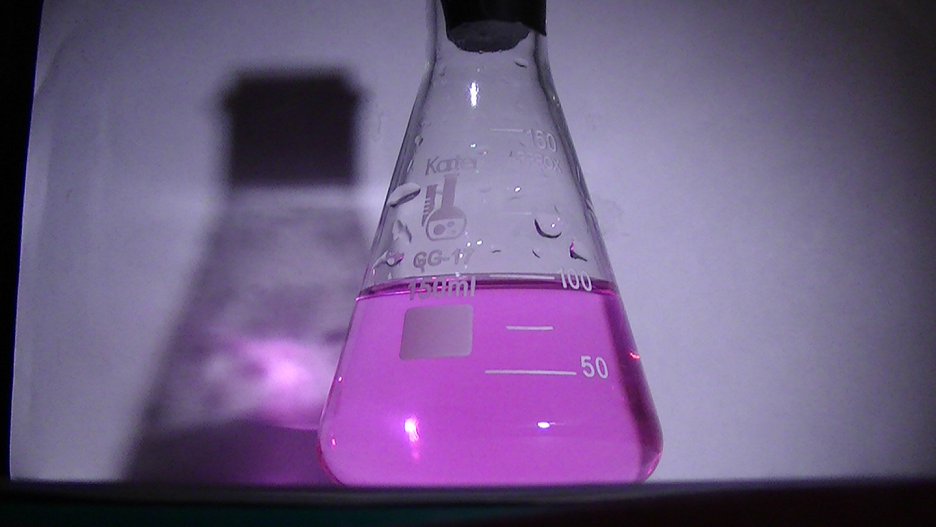
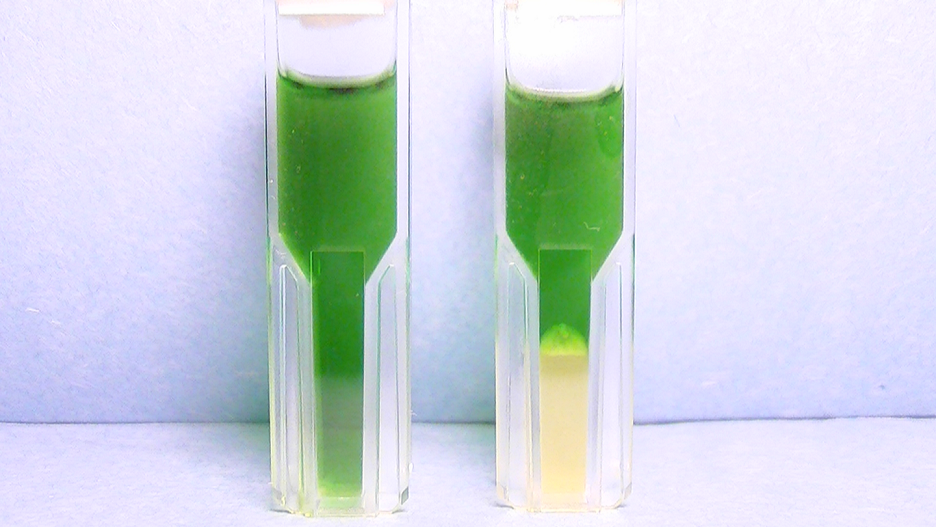
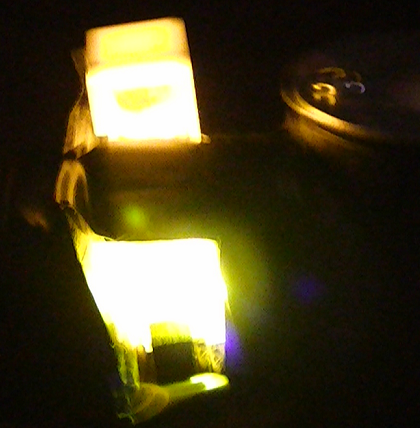
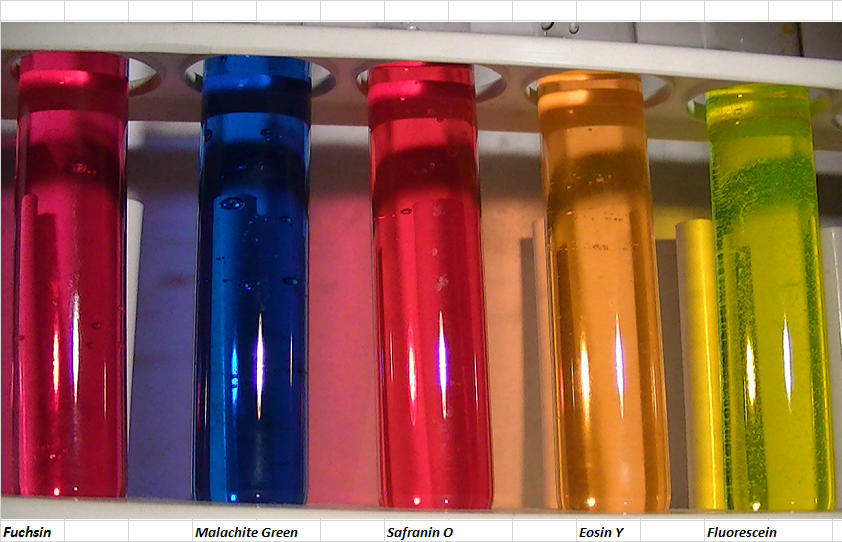
-
Solux 4700K Lamp Set Up
07/22/2016 at 12:27 • 0 commentsThis is how I presently have my spectrometer set up for absorption spectra testing, yeah, it doesn't look very sophisticated but it works very well!
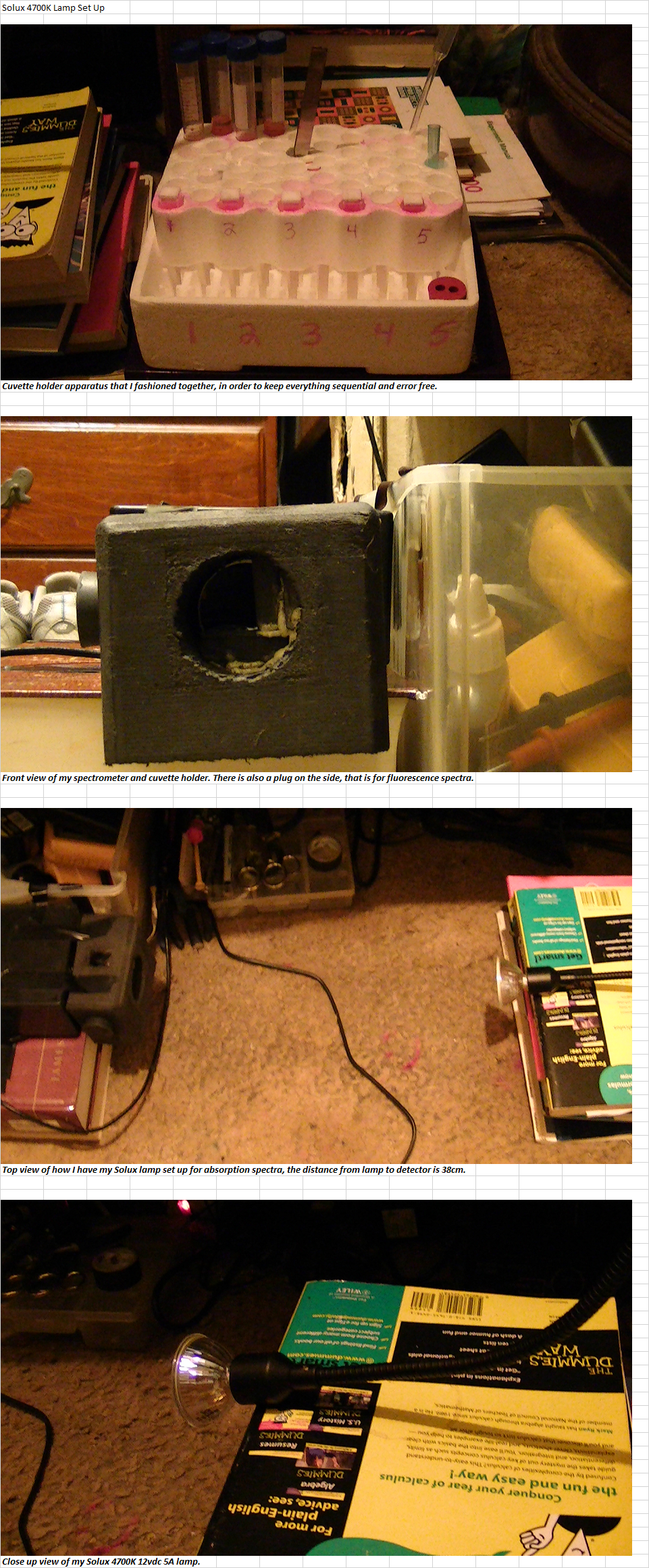
-
New Laser mount for the DH 4.2 Spectrometer
05/30/2016 at 13:43 • 0 commentsI had to build a far more stable apparatus for holding my laser when illuminating the samples in the cuvette holder in the spectrometer, so keeping my goals in mind, ( low cost but with high precision and quality,) I used my lab stand as a base foundation, since it is made out of metal and has sufficient weight.
Next, I had an old microscope aperture focusing mount and utilized some spare telescope parts and came up with this little baby!
I've already tested it and it's precision is oh, so welcomed! The movement from ascending to descension is extremely smooth, and allows me now to control the fluorescent intensity within the sample in order to eliminate as much signal to noise ratio from the analyte as possible.
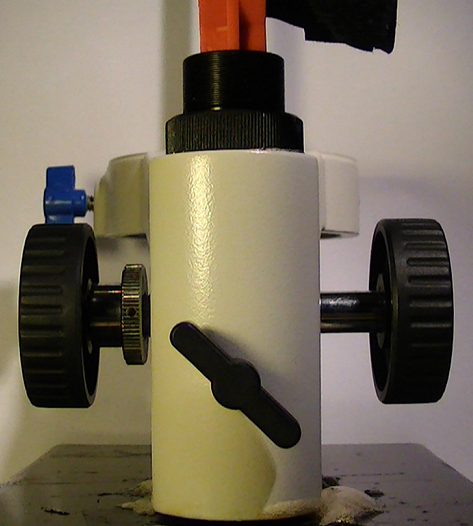
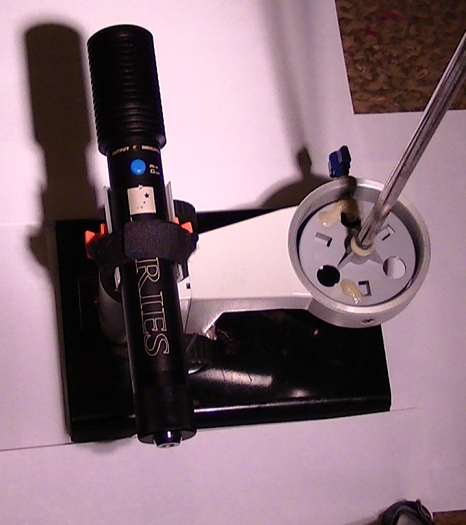
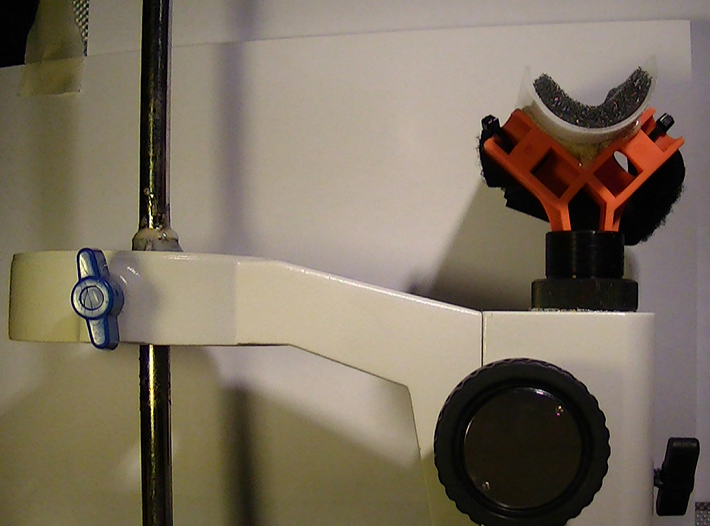
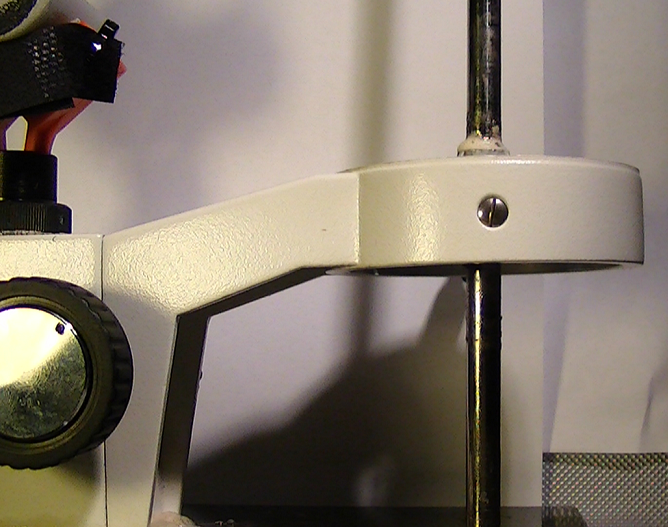
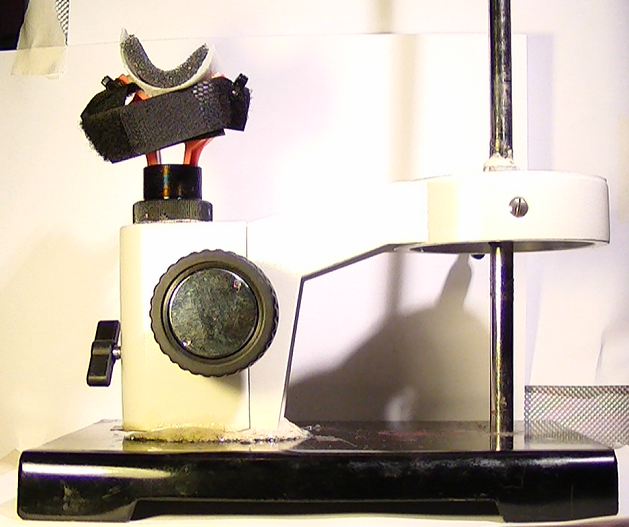
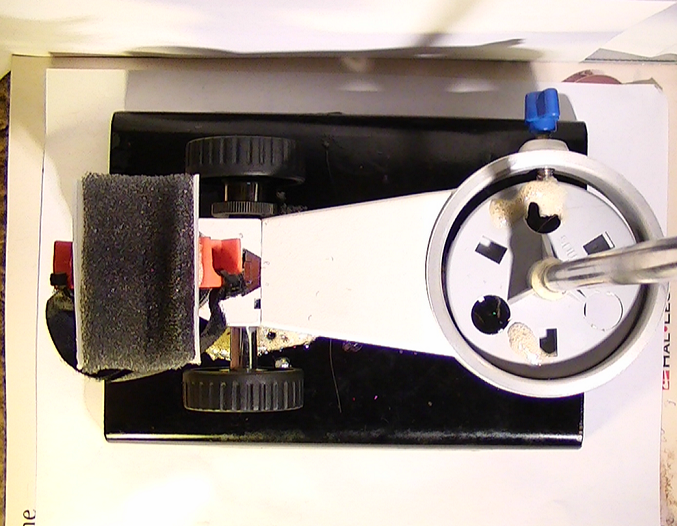
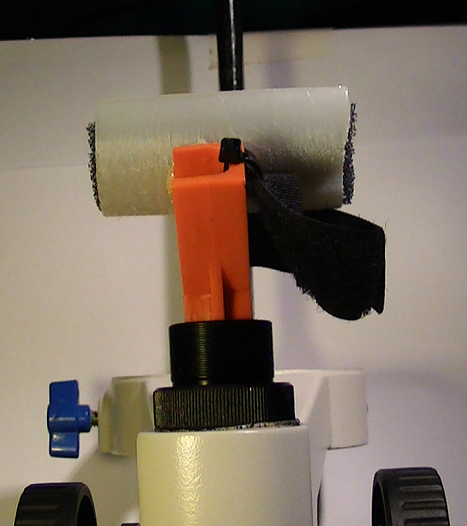
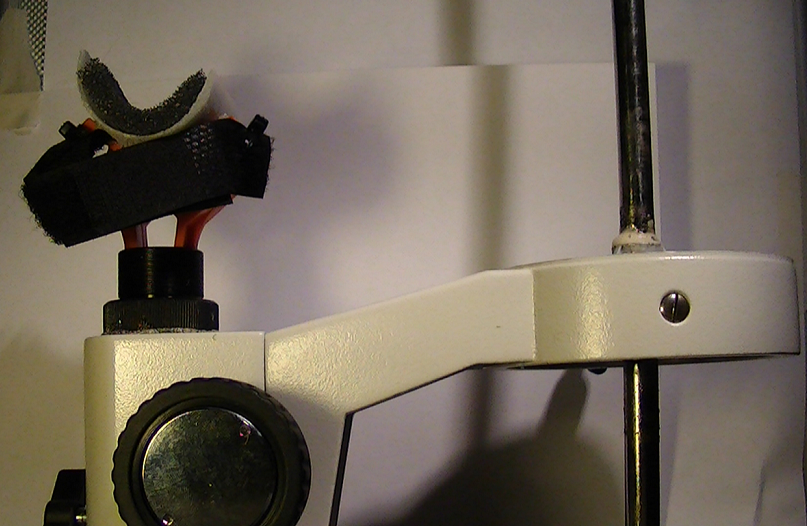
-
Calibrations and Tweaks for My spectrometer
05/20/2016 at 19:15 • 0 comments
I thought I'd create another additional page to supplement the times when I am either tweaking my project or doing a hardware calibration and such, kind of a misc page!
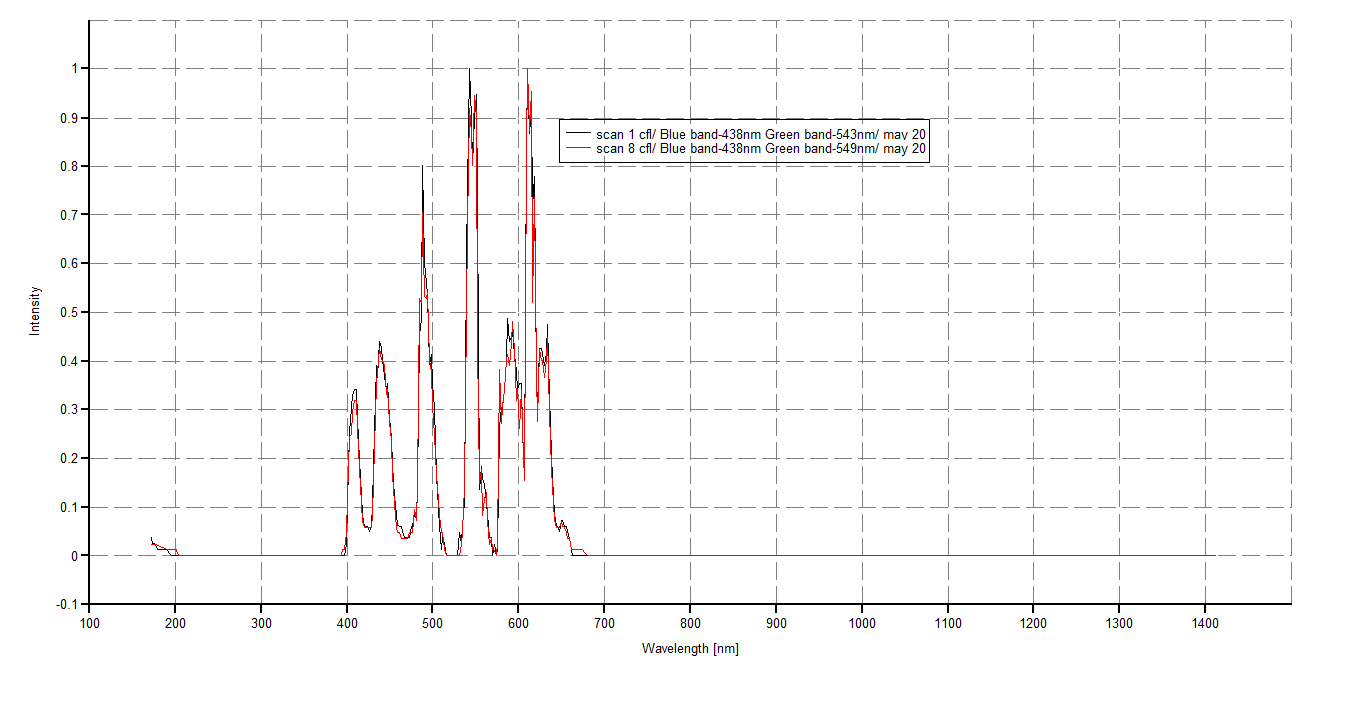 http://publiclab.org/notes/dhaffnersr/05-20-2016/cfl-scans-using-the-dh-4-2-spectrometer
http://publiclab.org/notes/dhaffnersr/05-20-2016/cfl-scans-using-the-dh-4-2-spectrometer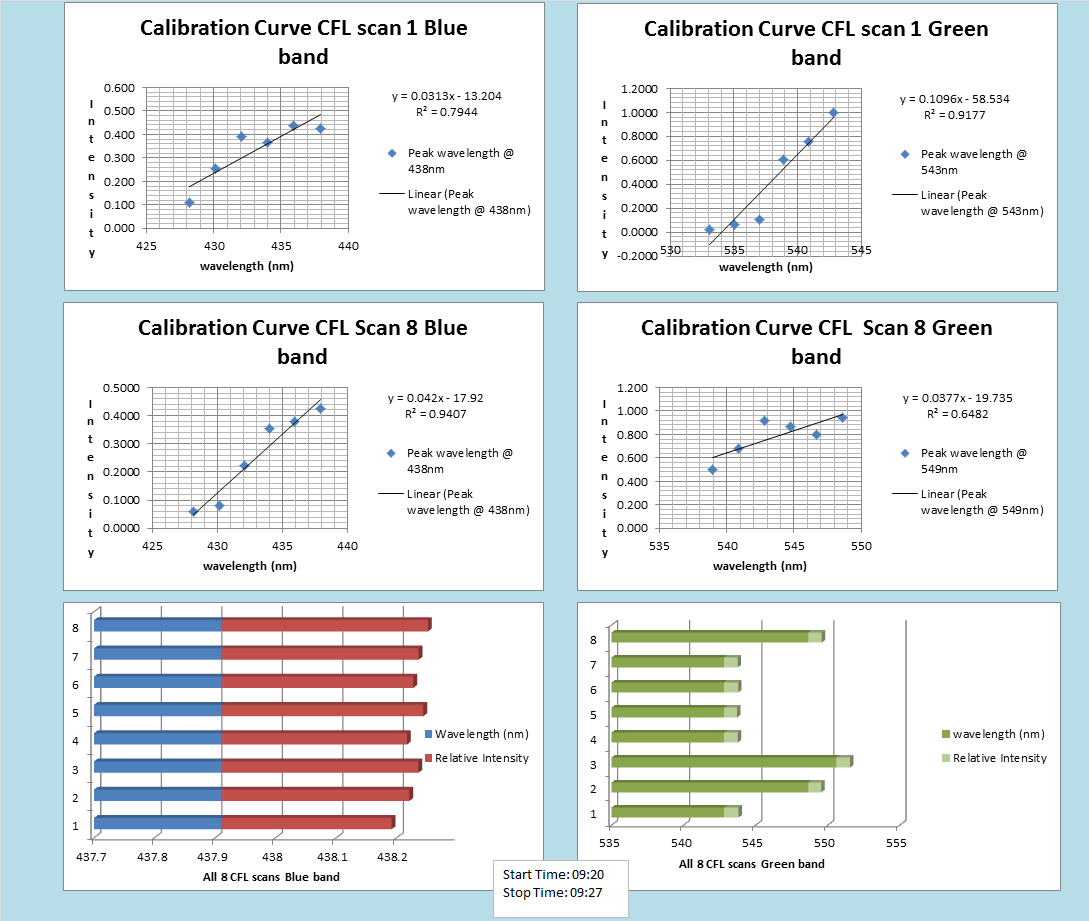
-
New Cmos so new specs
05/09/2016 at 13:16 • 0 commentshere are the new specs for the new cmos...
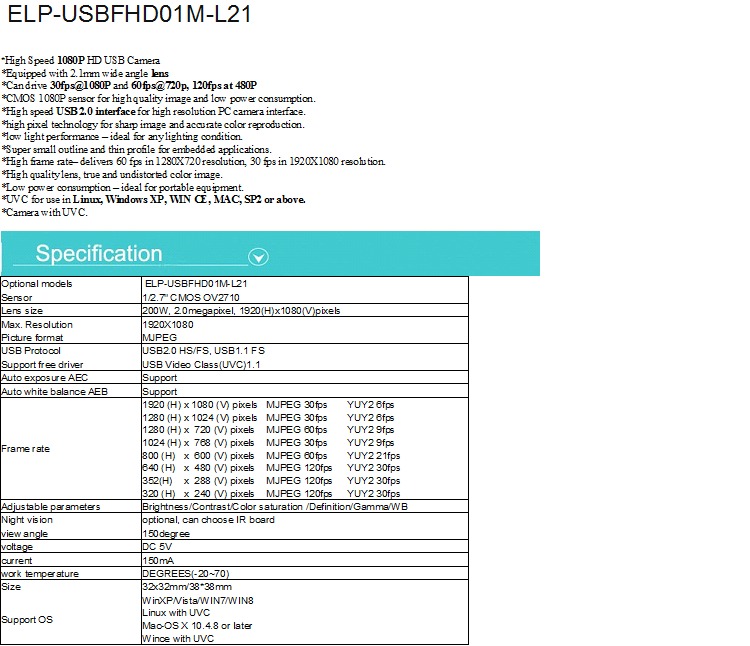
-
1W to 5W LED circuit driver
04/24/2016 at 09:28 • 0 commentshere is an LED circuit driver that I designed to power my 1W and 5W LEDs...
http://publiclab.org/profile/dhaffnersr -
Public lab spectrometer v2.5 (mod 3.0.1)
04/24/2016 at 09:17 • 0 commentsNew DVD grating upgrade
http://publiclab.org/profile/dhaffnersrThis is a spectrometer kit I bought from Plab about 4 months ago, I have made several modifications since then, here are some specs on how it stands now:
1) Spectrometer bandwidth = 5
2) Slit width = 0.09
3) Slit length = 19mm
4) Distance of slit to camera = 48mm
5) Cuvette distance to slit = 29mm
6) Cuvette distance to camera = 78.13mm
7) Width of DVD grating = 17.90mm
8) DVD piece used is 8.5gb - ruling density = 2770 lines/mm = 0.36mm groove spacing = 360nm
JDEPC-ov04 cameraSpecs:
Sensor Type
OV2643
Active pixel array area
3590um * 2270um
Power Supply
Core
1.5 VDC ± 5%
Analog
2.6 to 3.0 Vdc
I/O
1.70V ~3.0Vdc
Temperature Range
Operation
-20°C ~ 70°C
Stable Image
0°C ~ 50°C
Output formats
YUV / Ycb Cr 4:2:2 ; RGB 5:6:5 / 5:5:5 ;GBR 4:4:4 ; 8/10BIT RAW RGB Data
Optical Format
1/4 inch
Frame rate
15 fps for UXGA,30fps for SVGA, 30fps for 720P,60 fps for QVGA and any lower resolution
Scan mode
Progressive
Maximum Exposure Interval
1227Xtrow
Gamma Correction
Programmable
Pixel Size
2.2 um x 2.2um
Full resolution
1600x 1200 pixels (UXGA)
Sensor Package Dimension
5035um x 4635um
